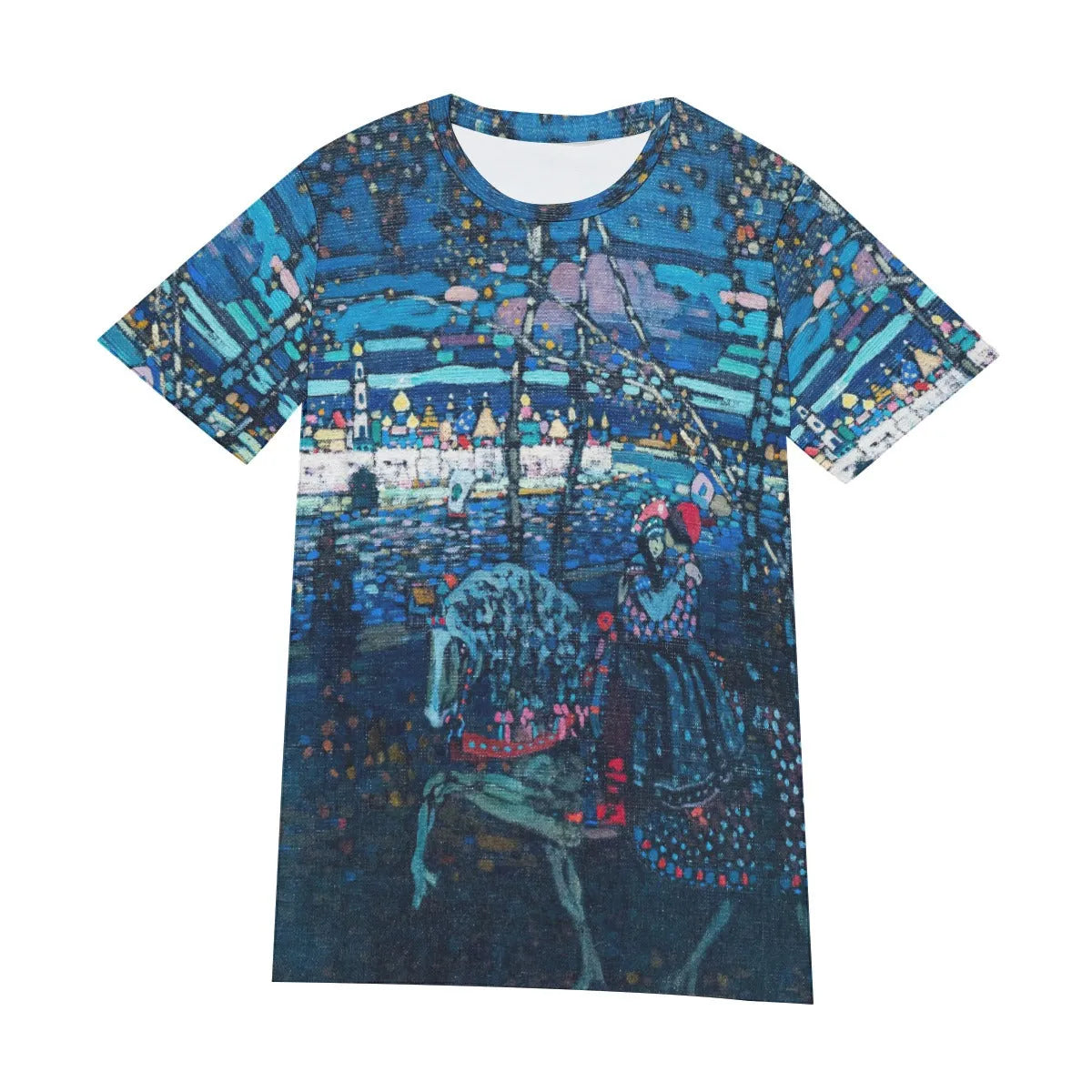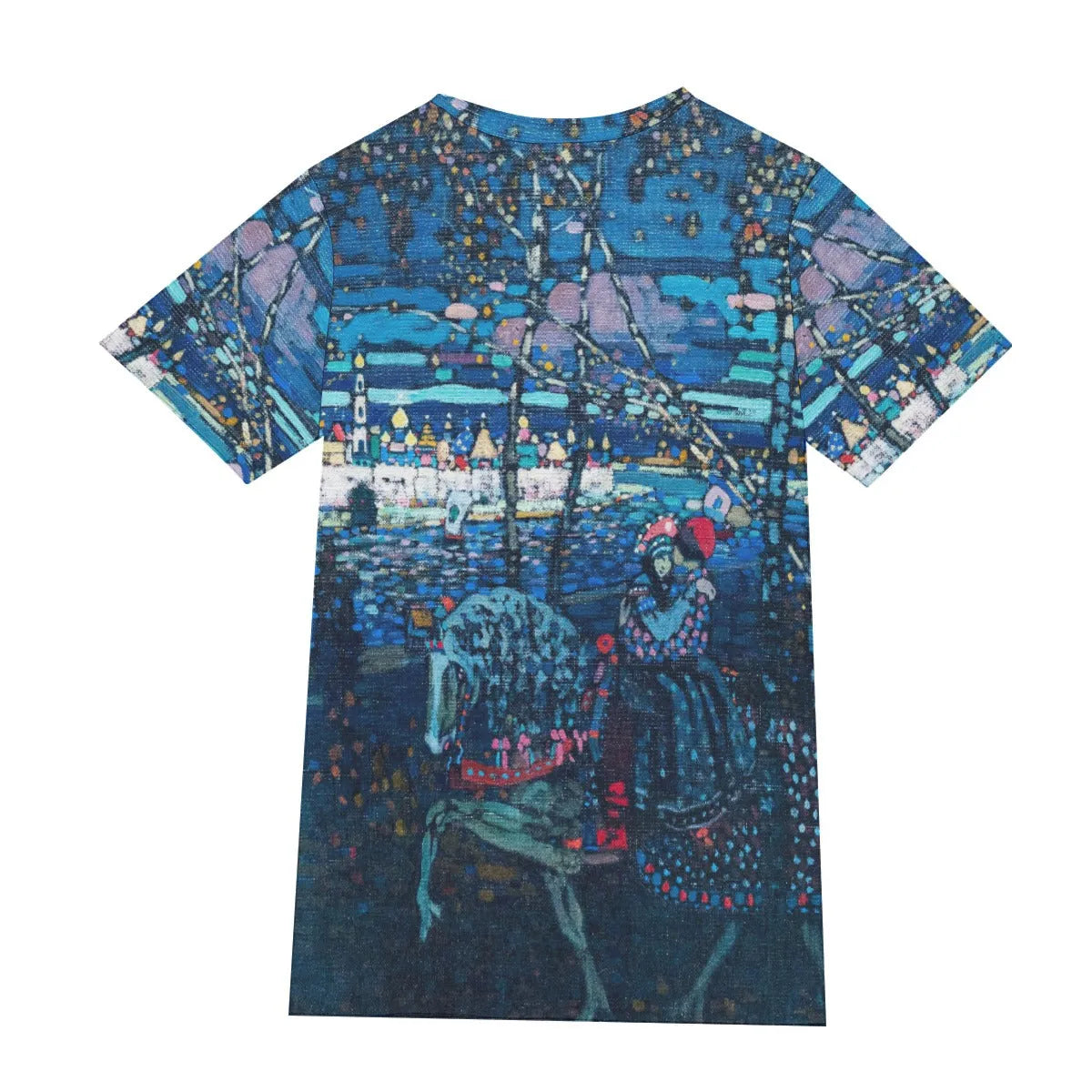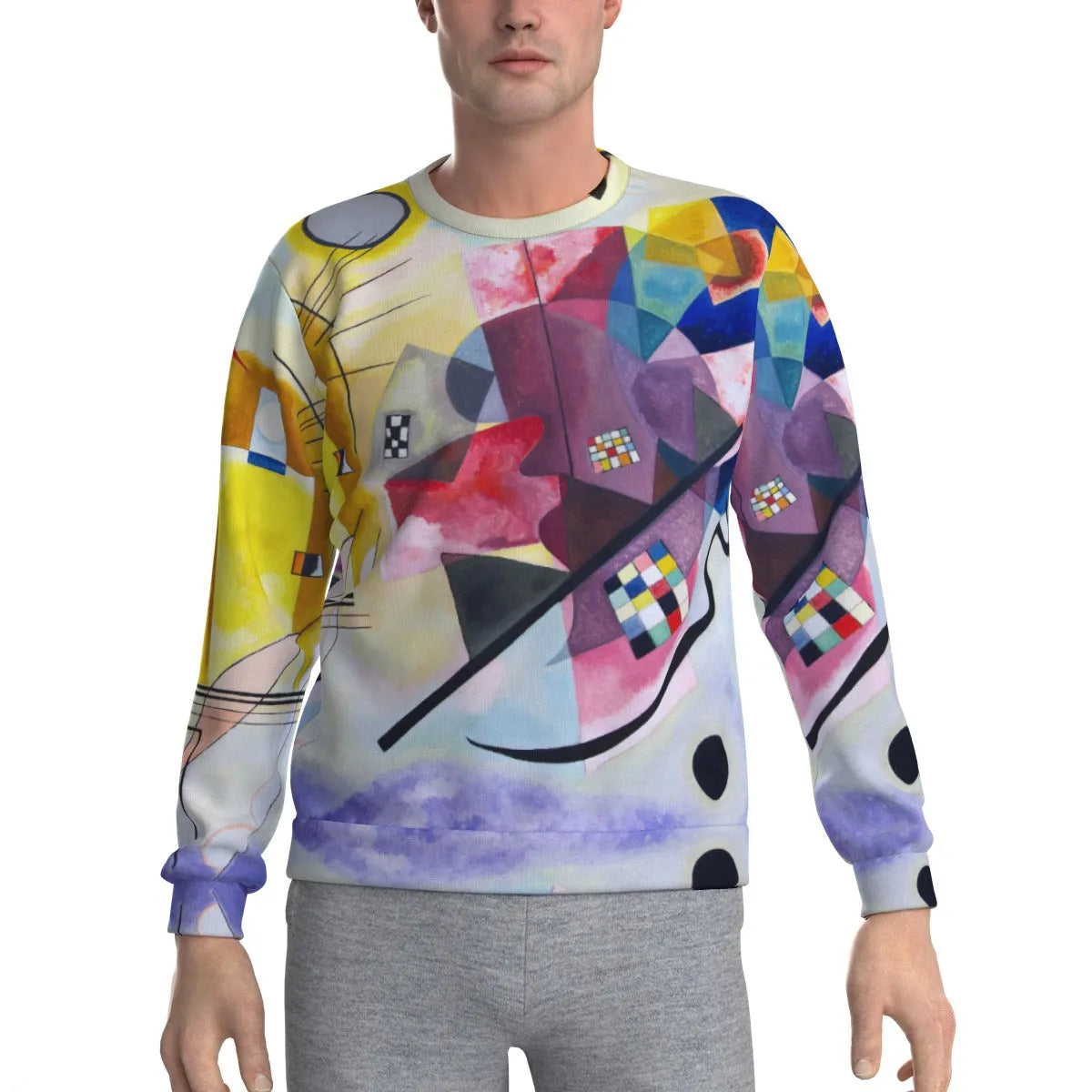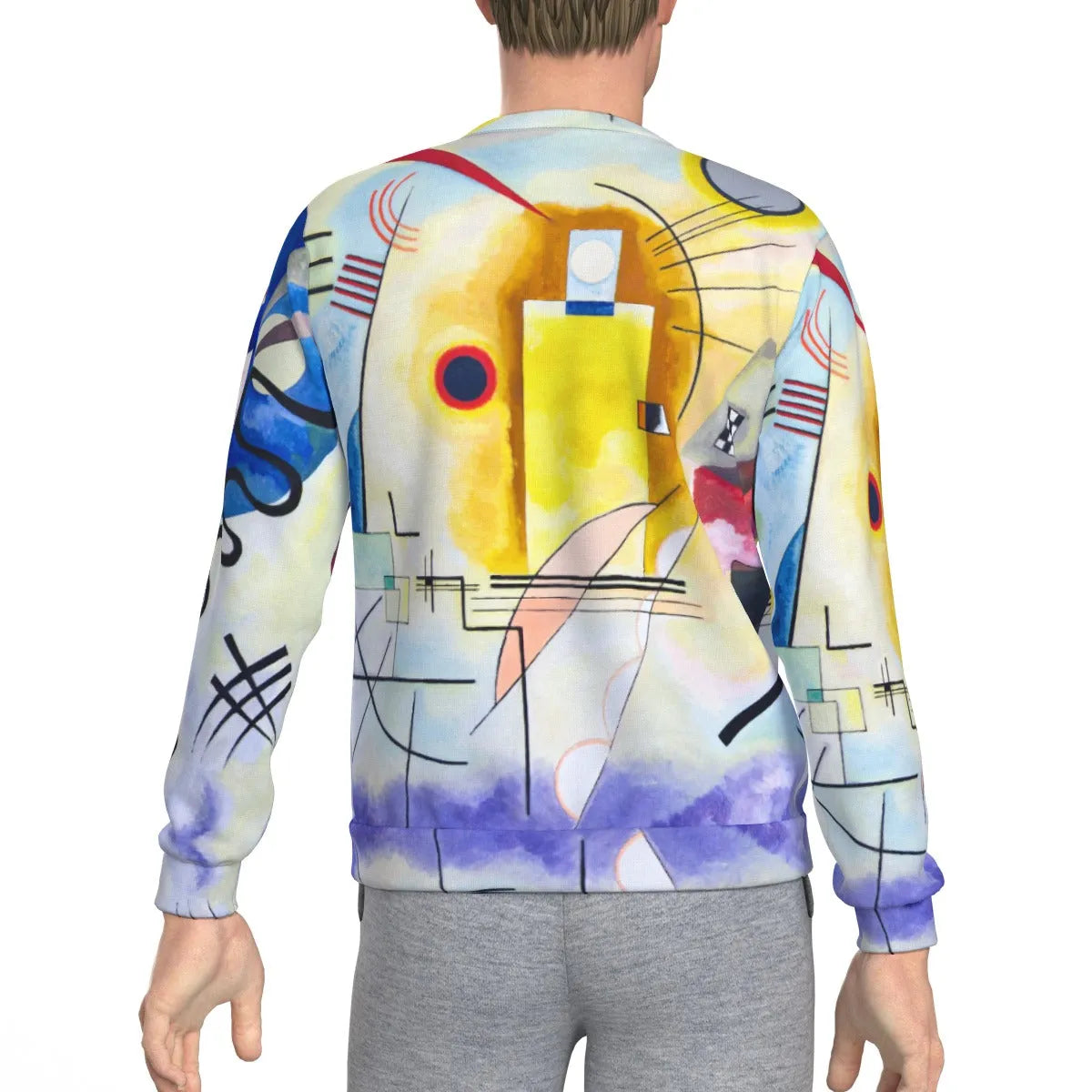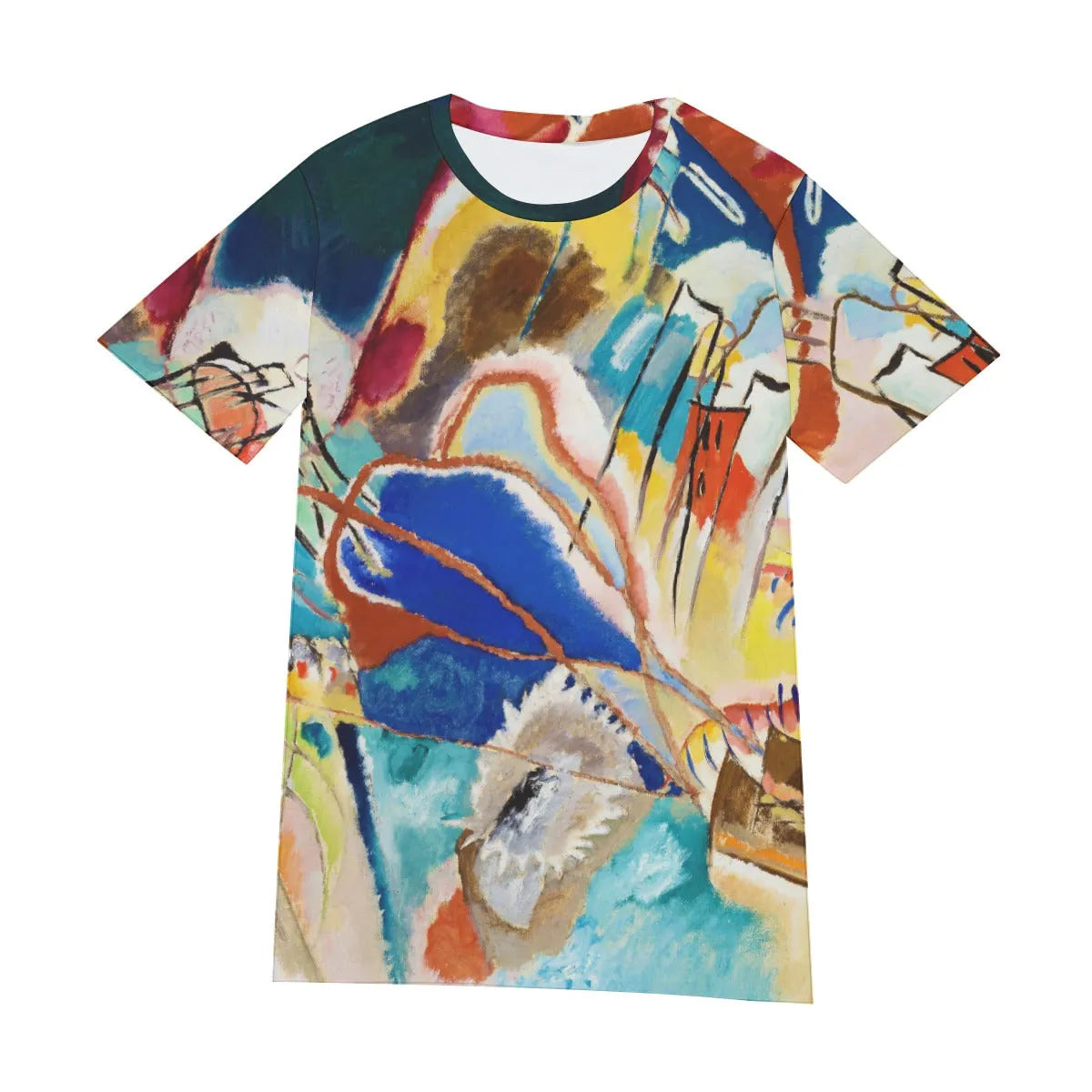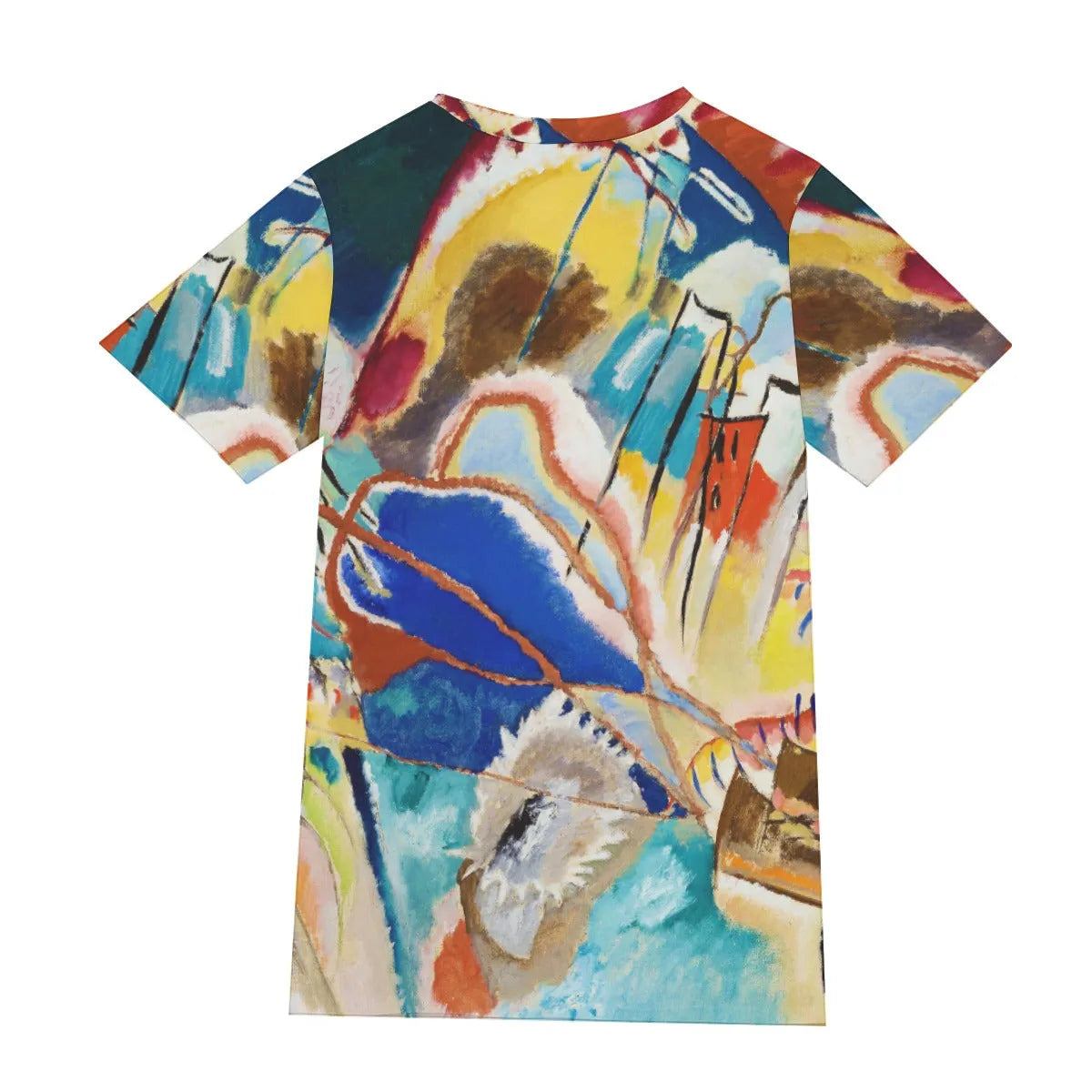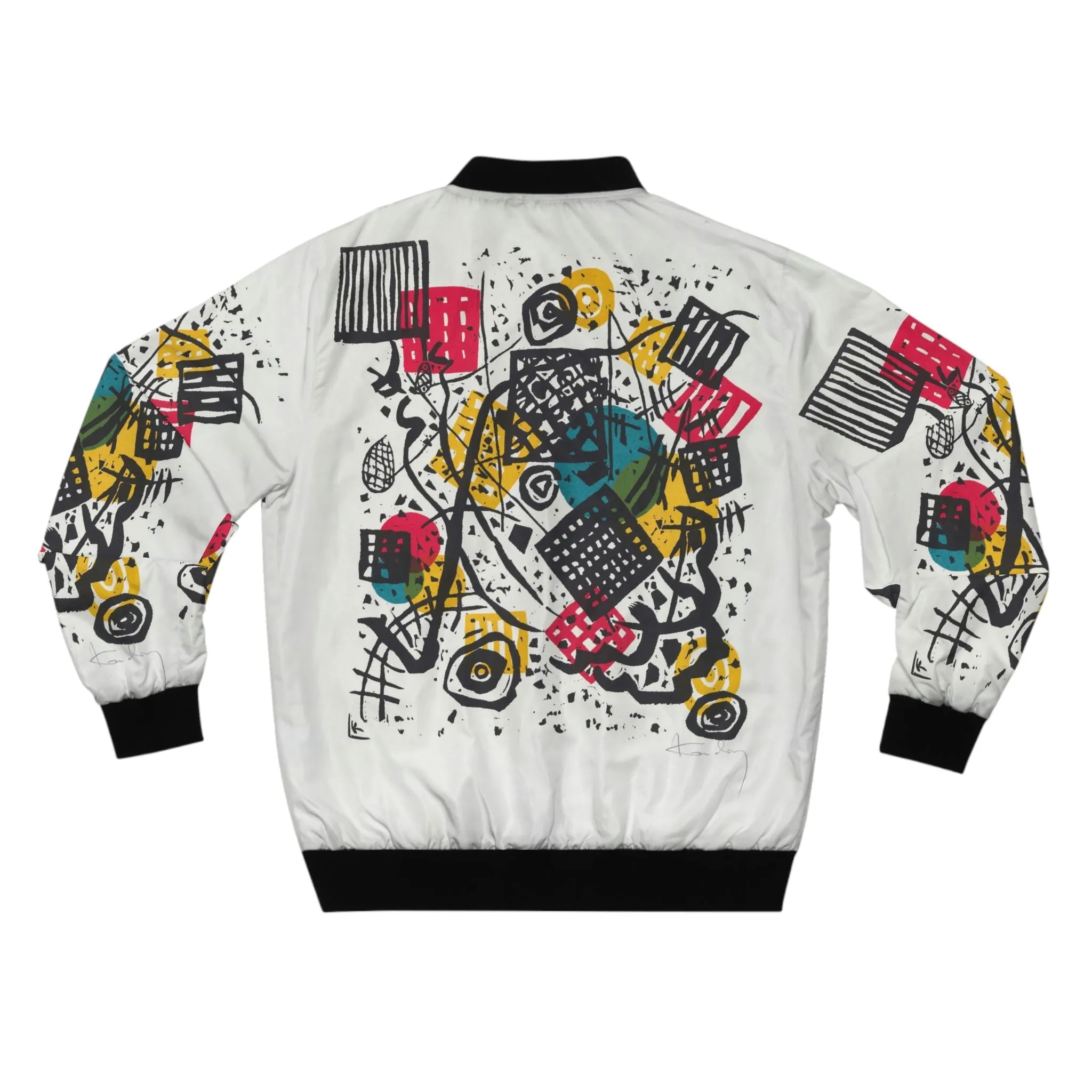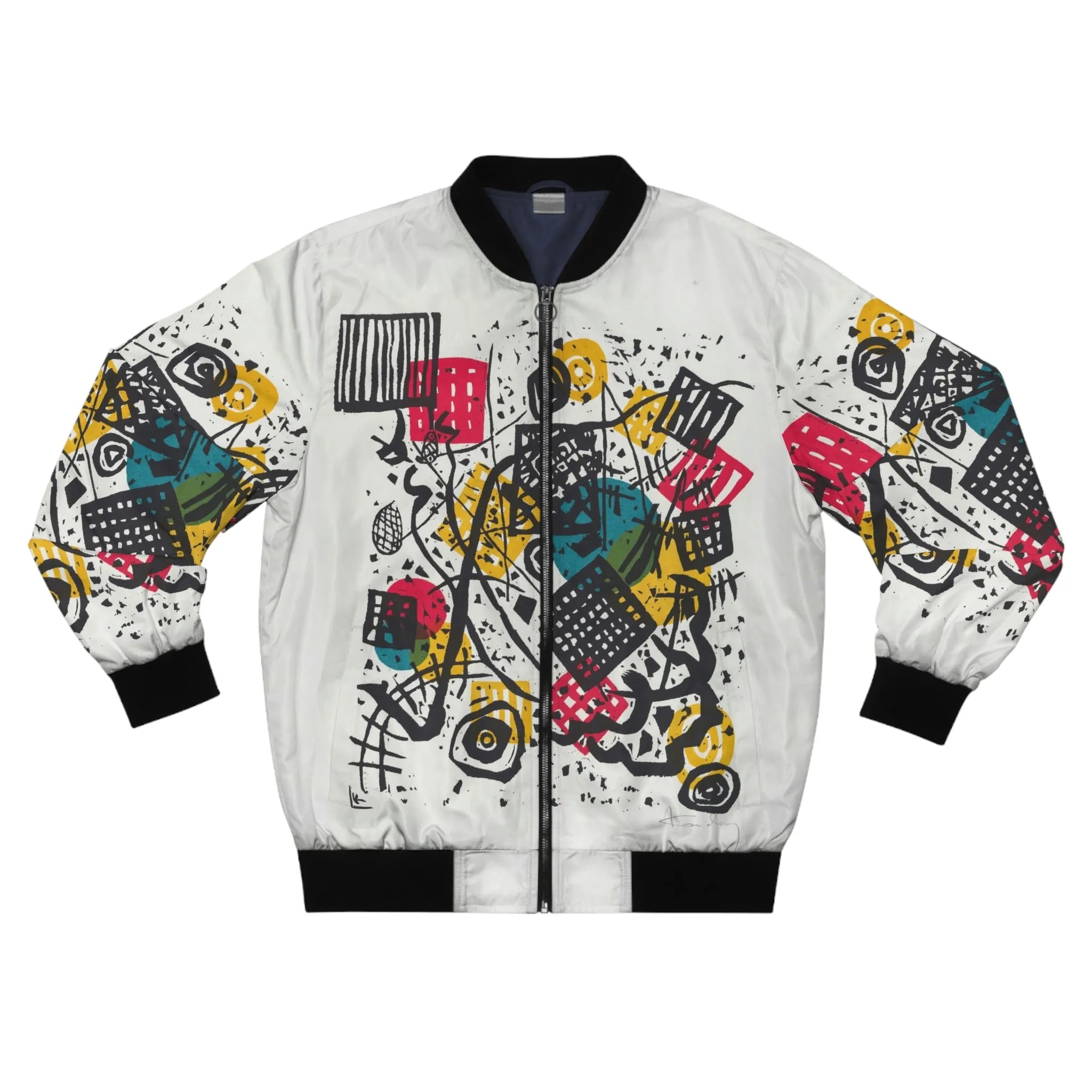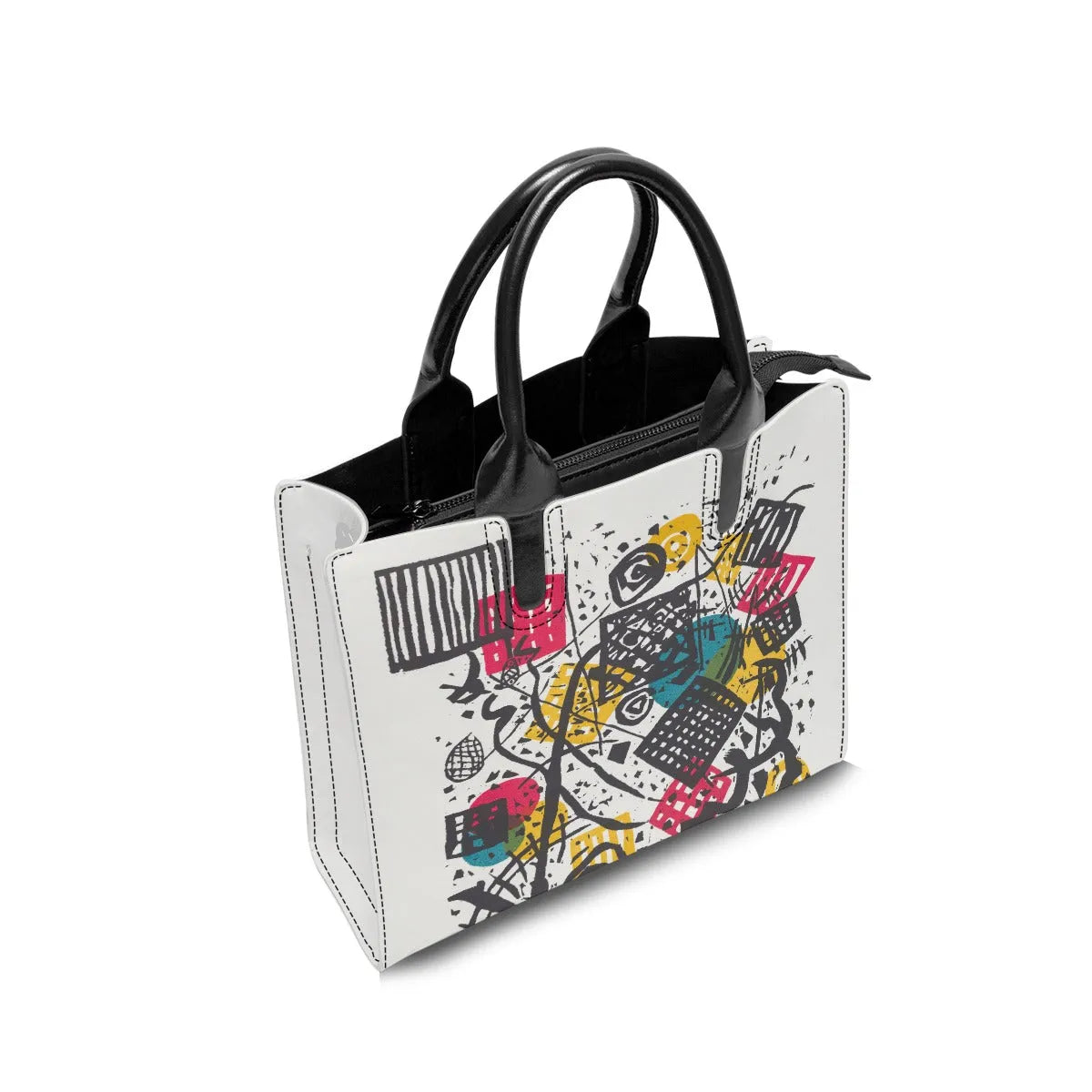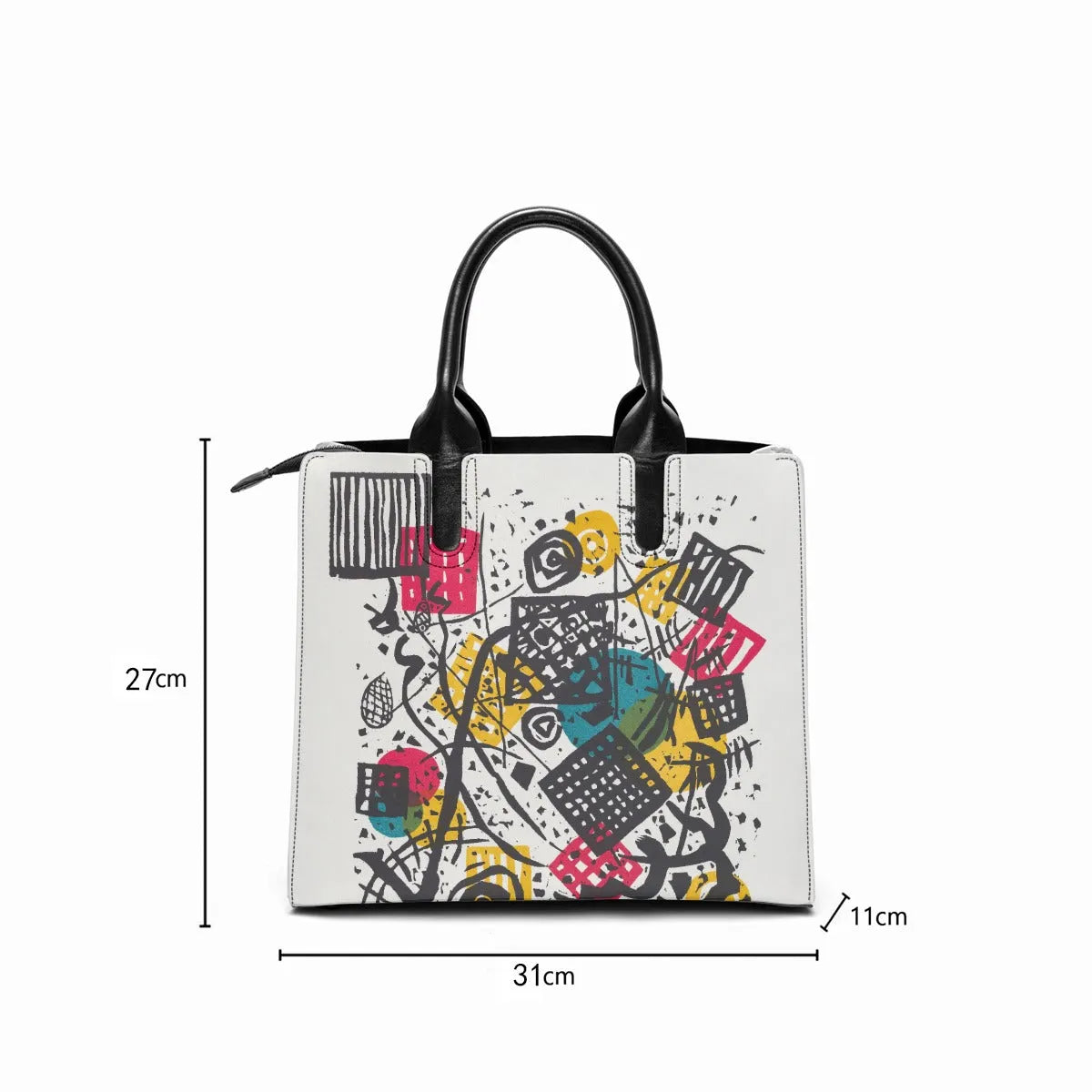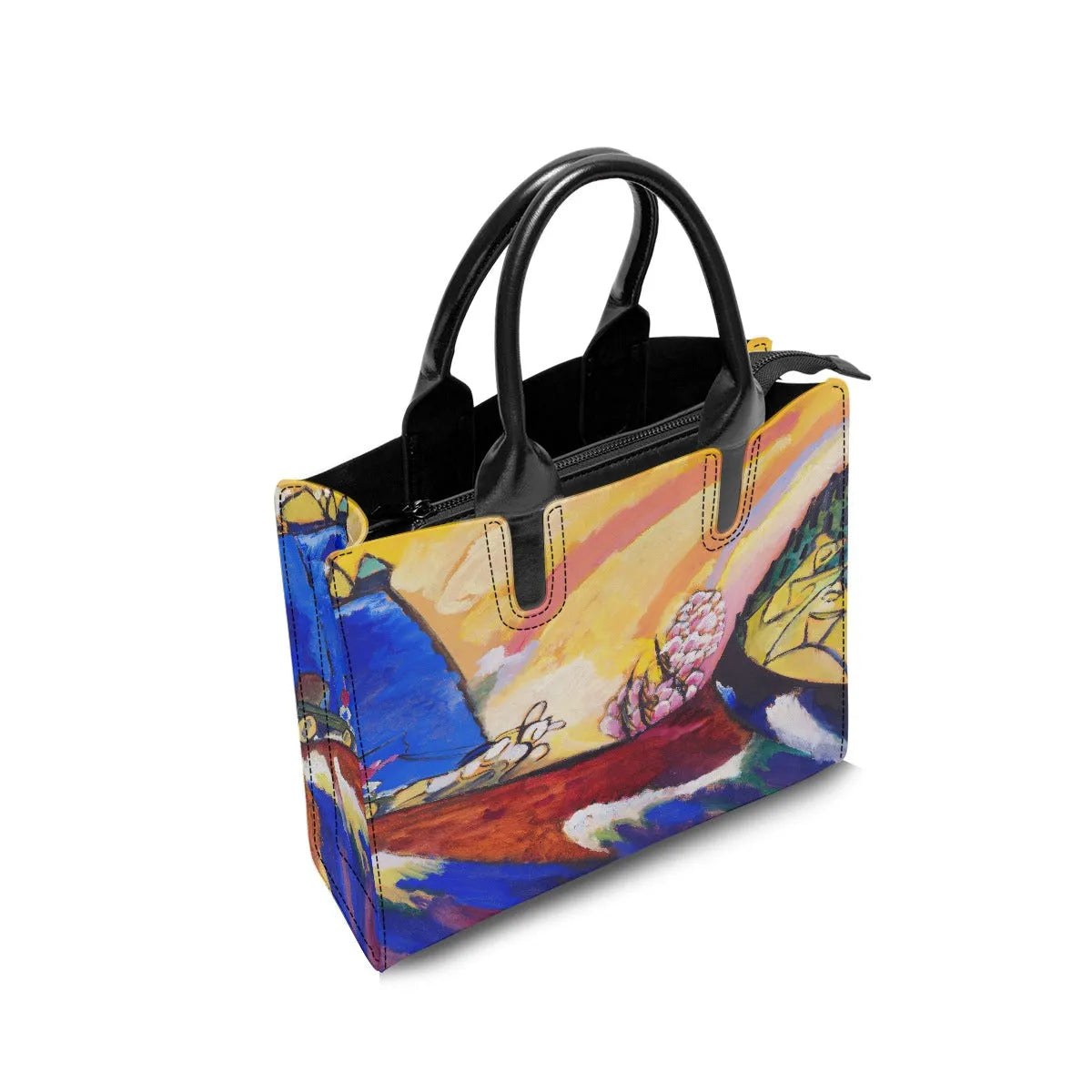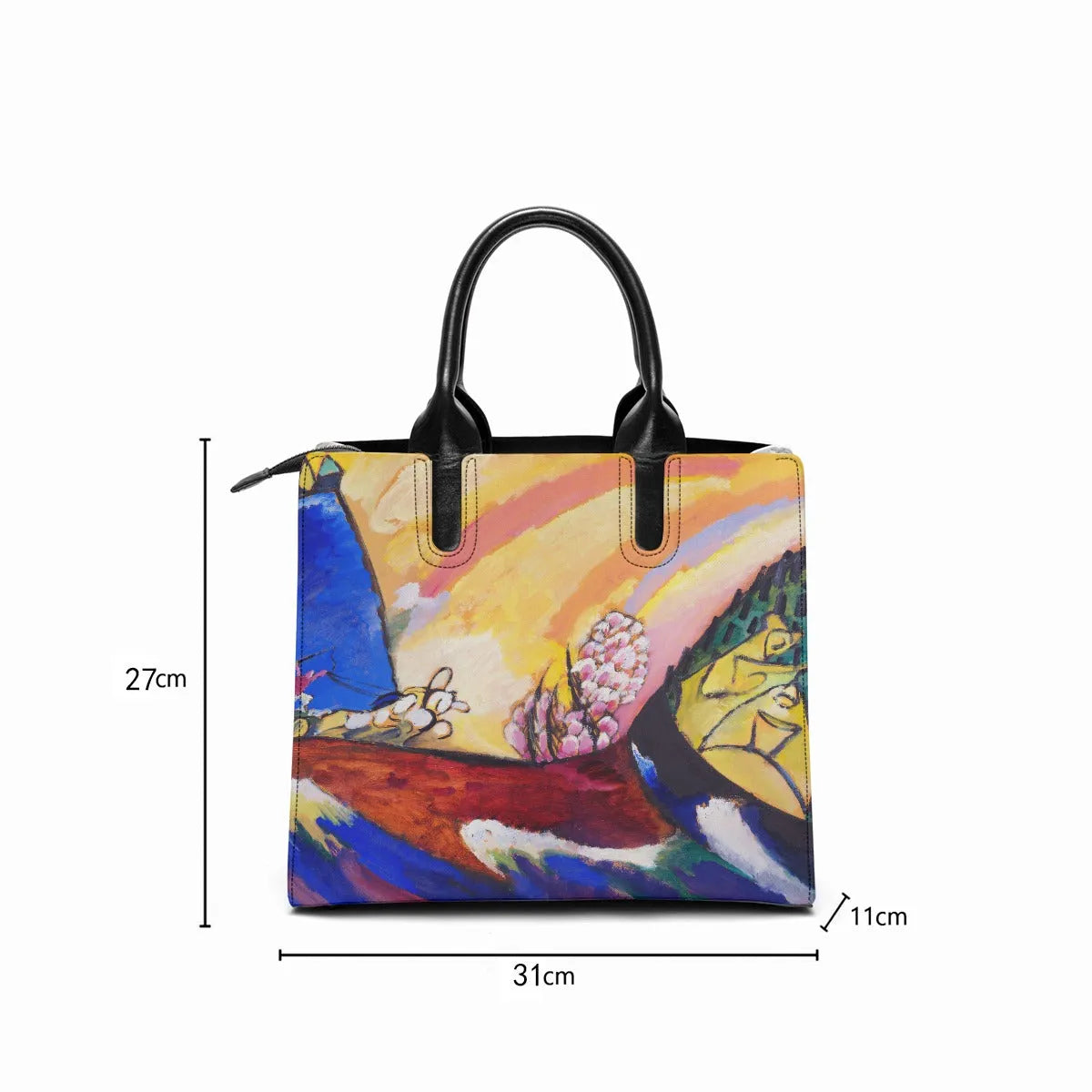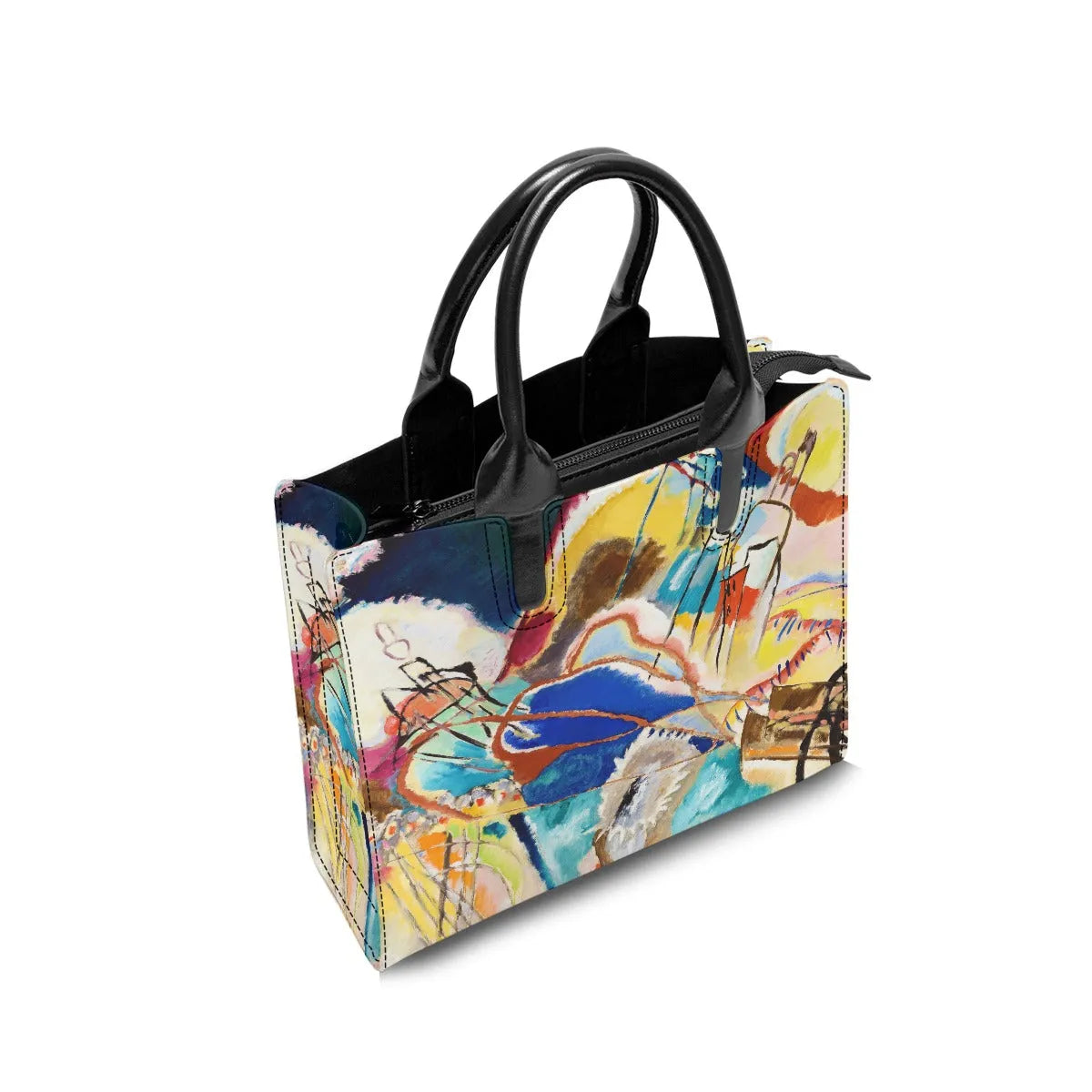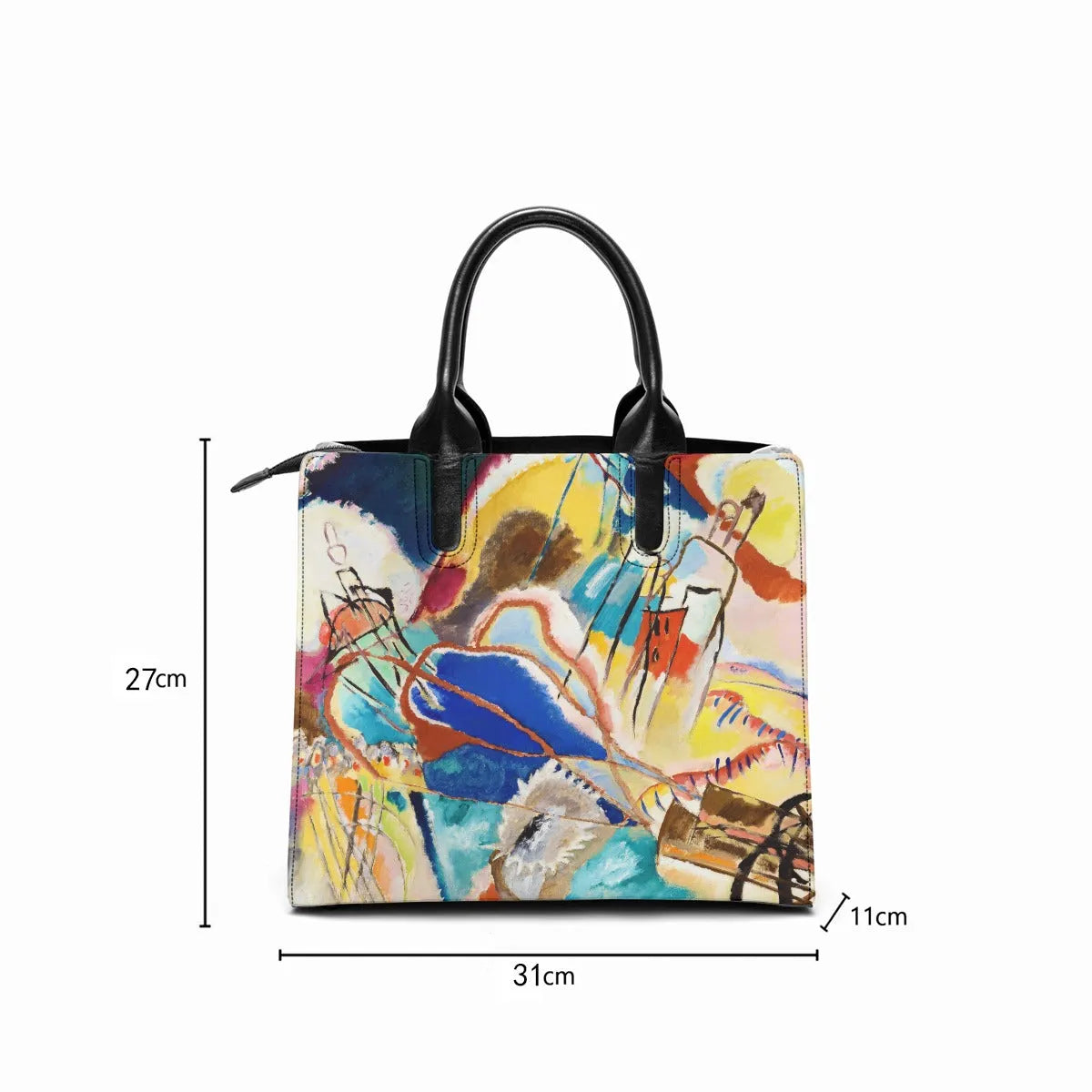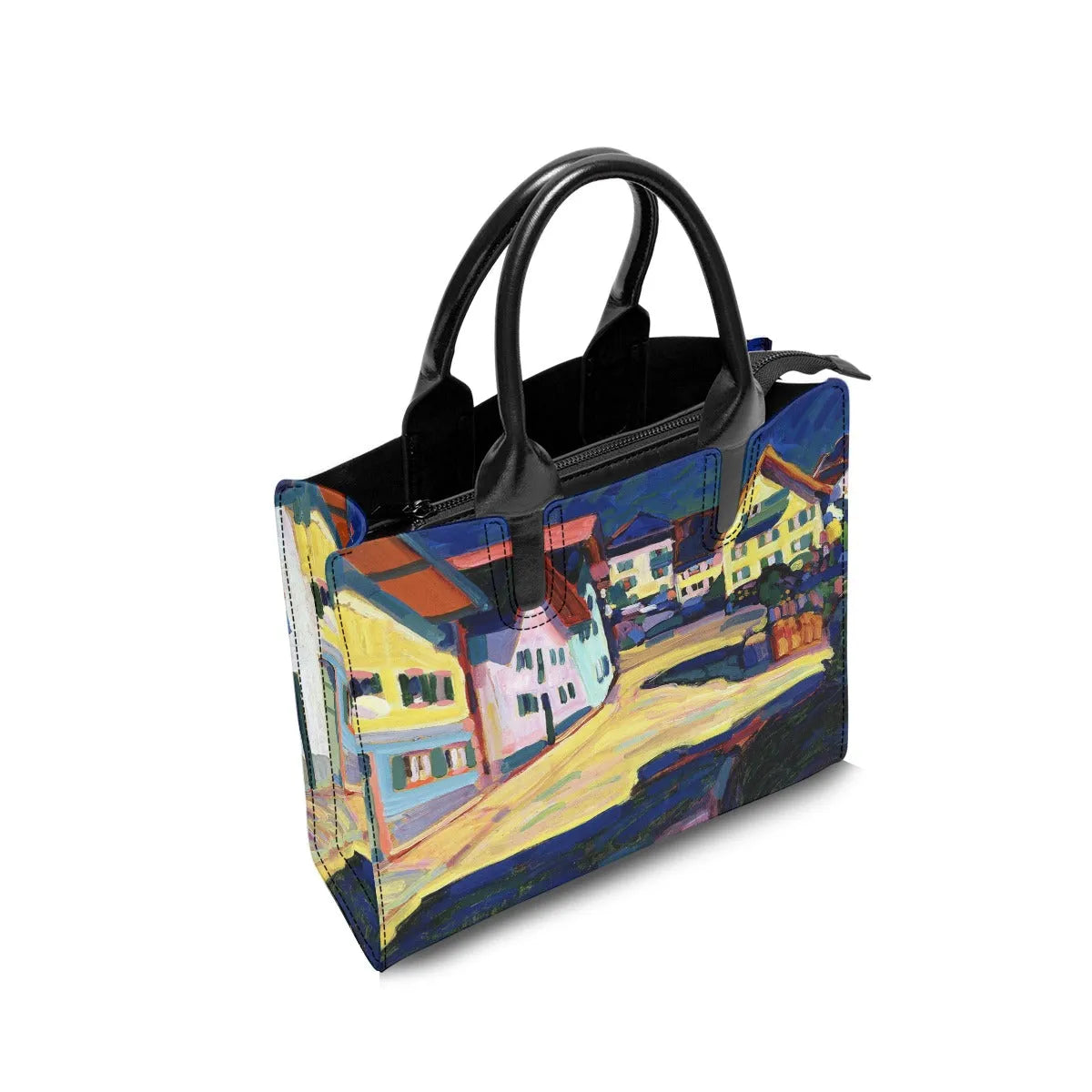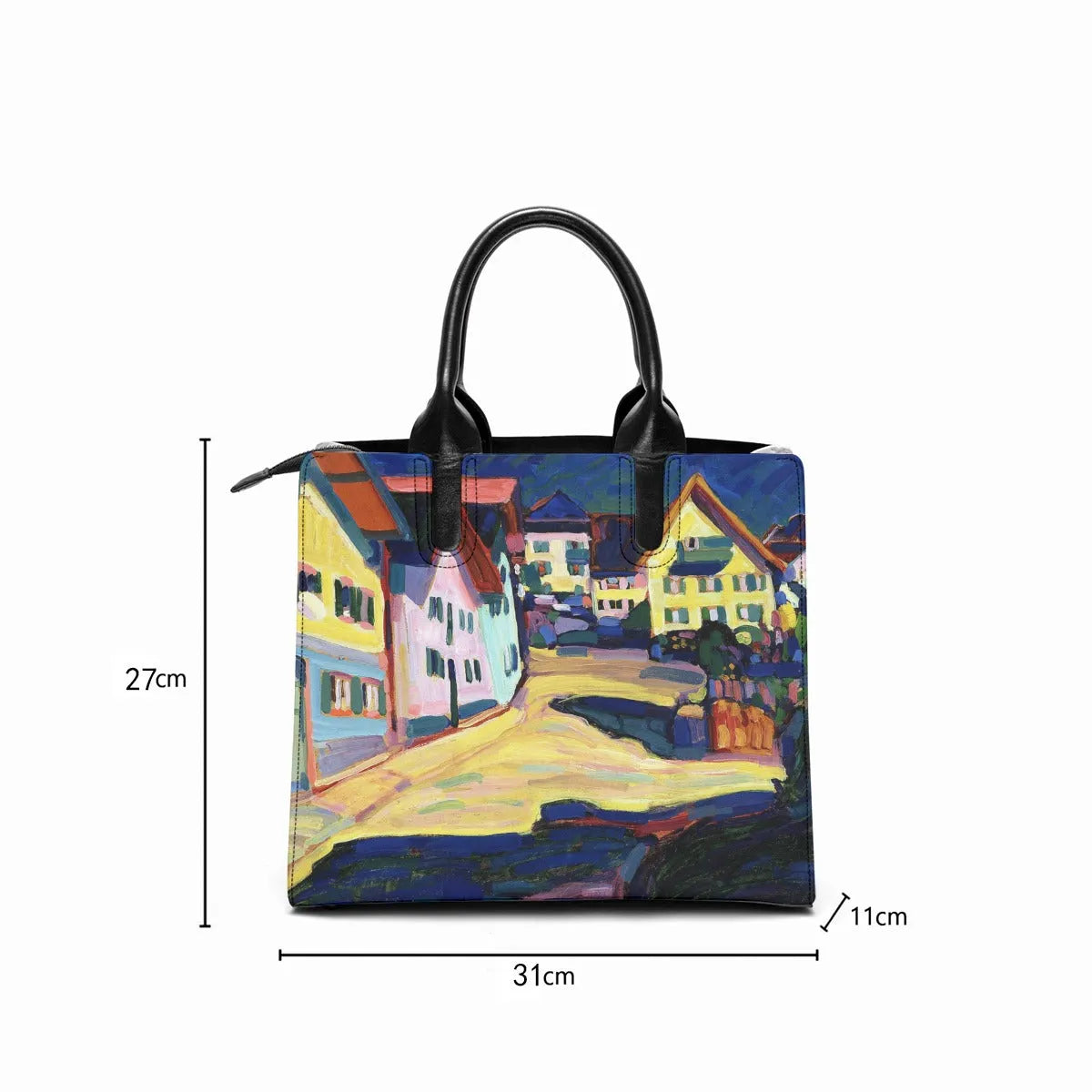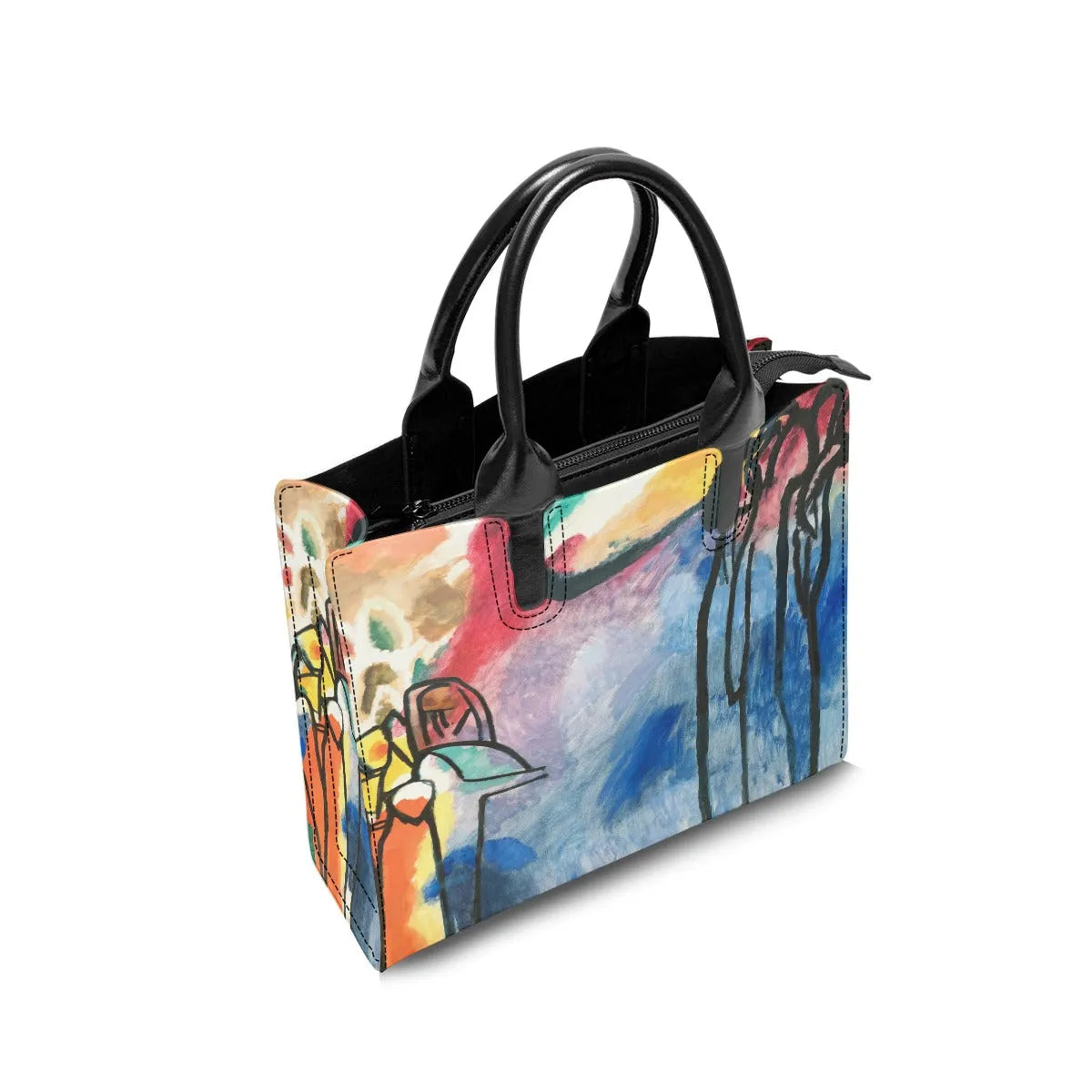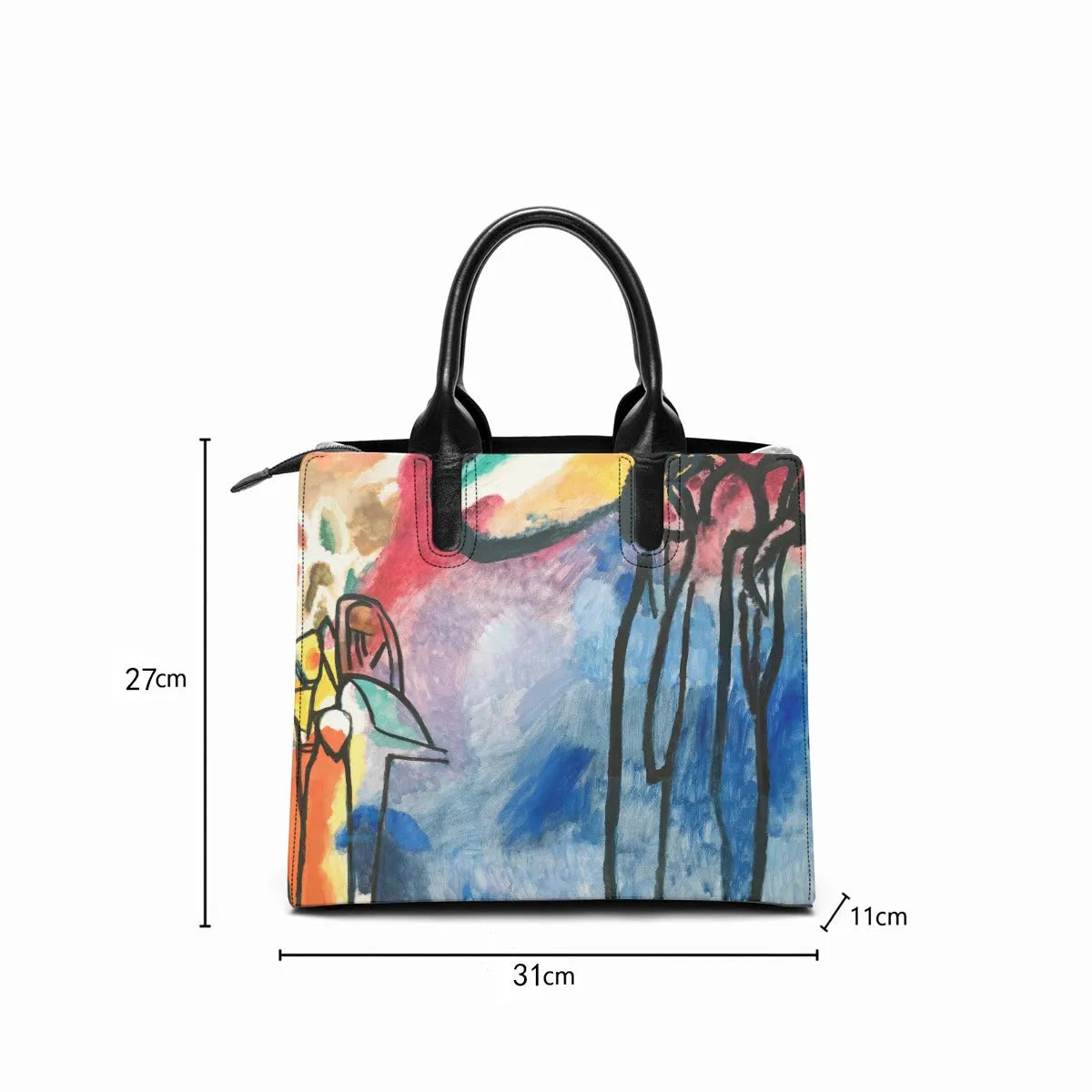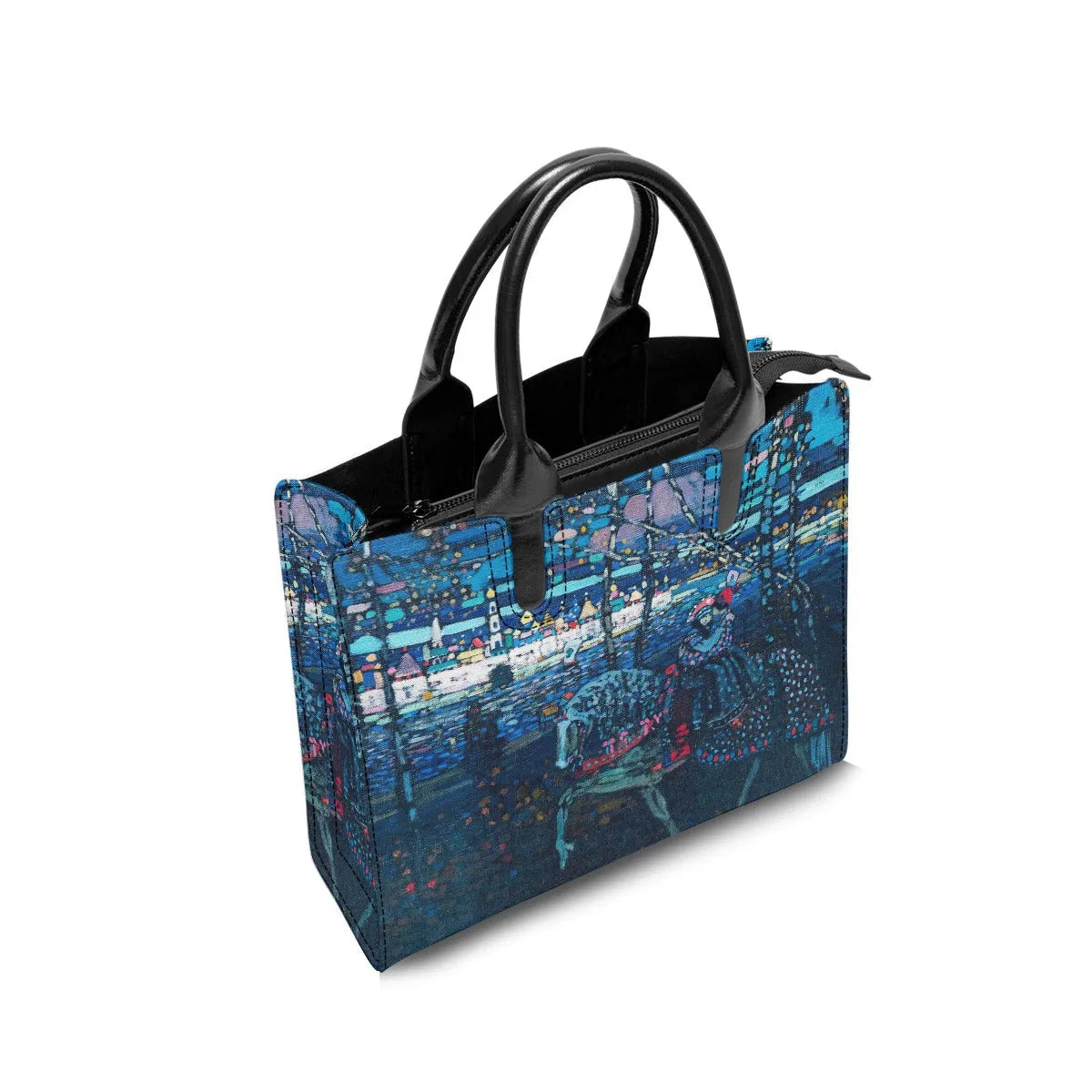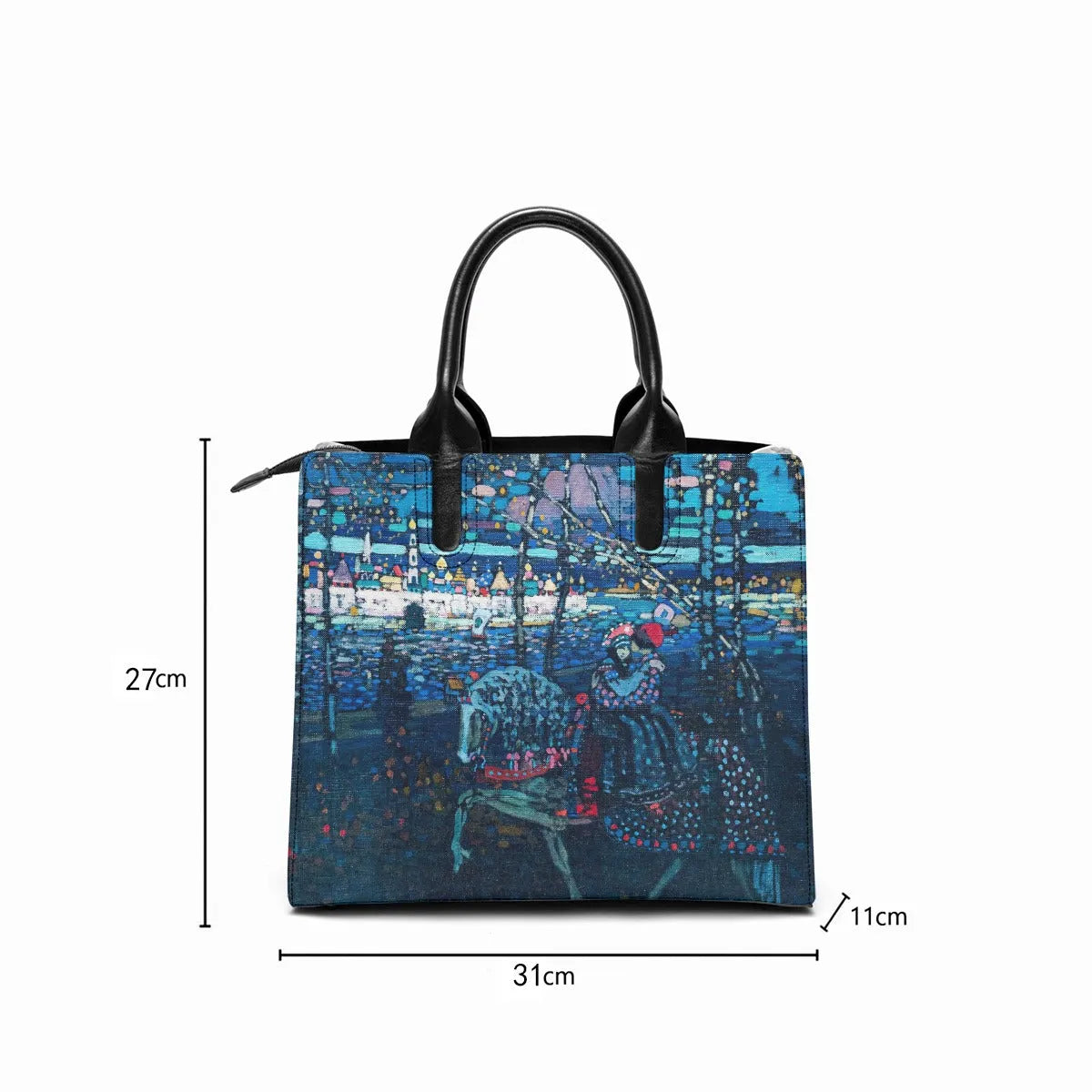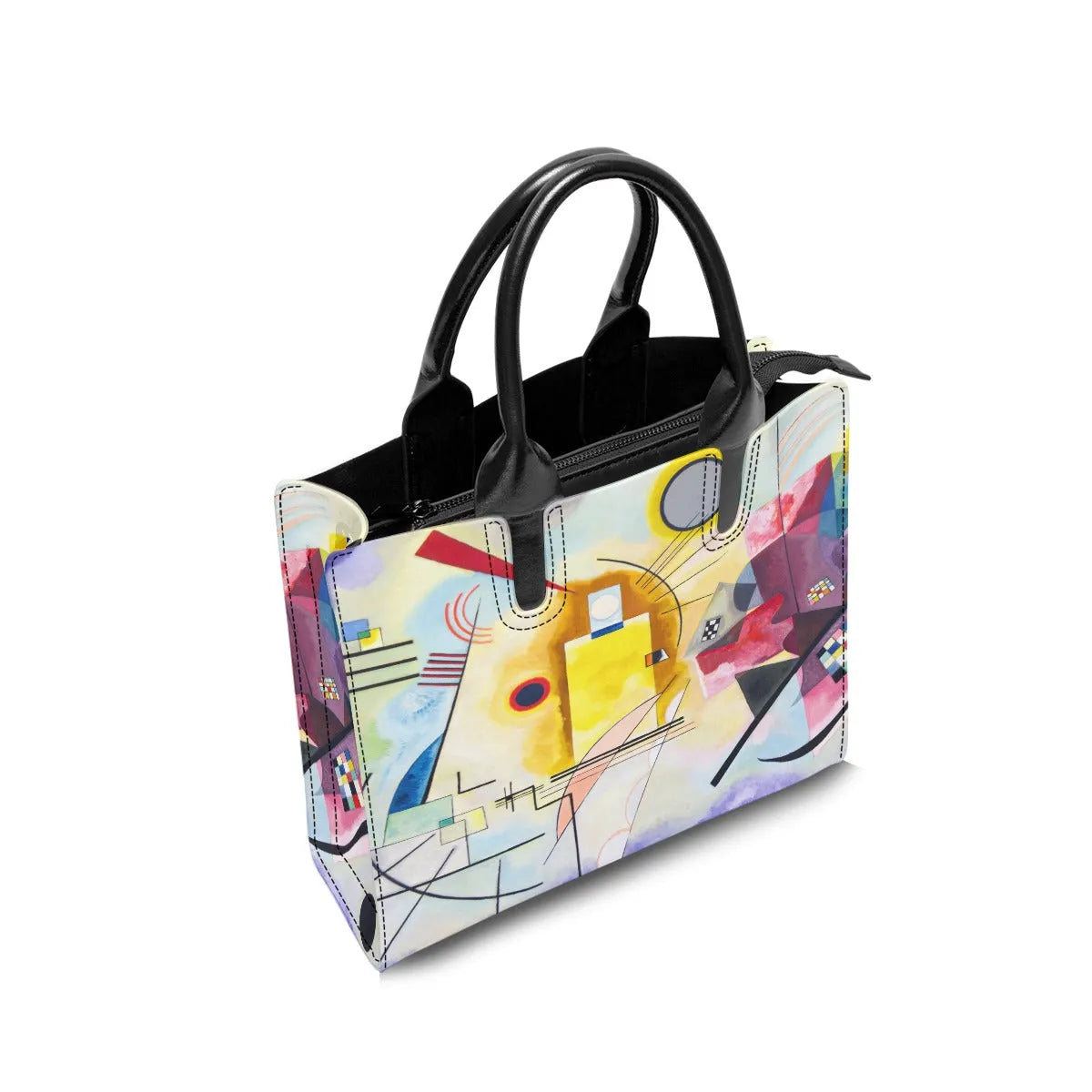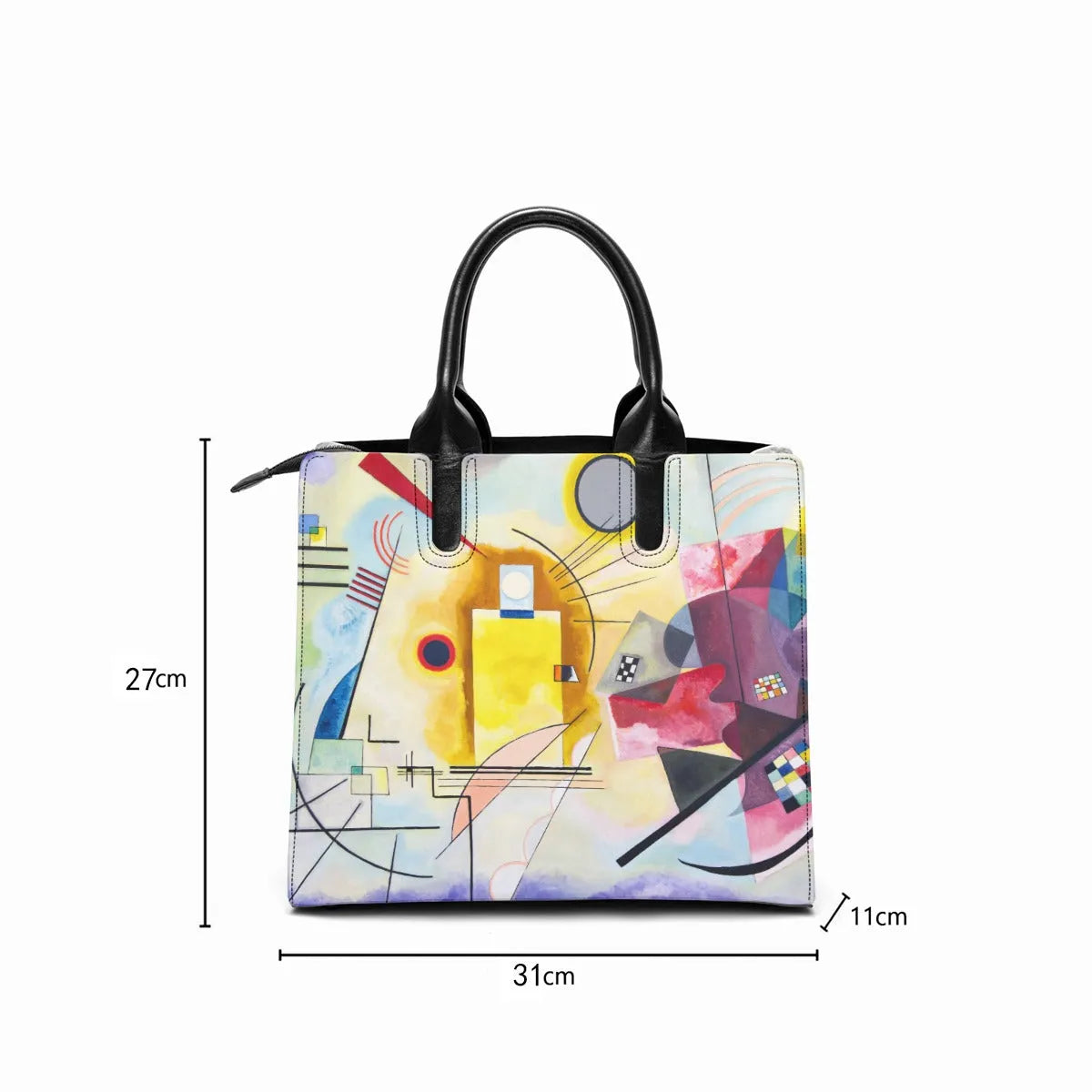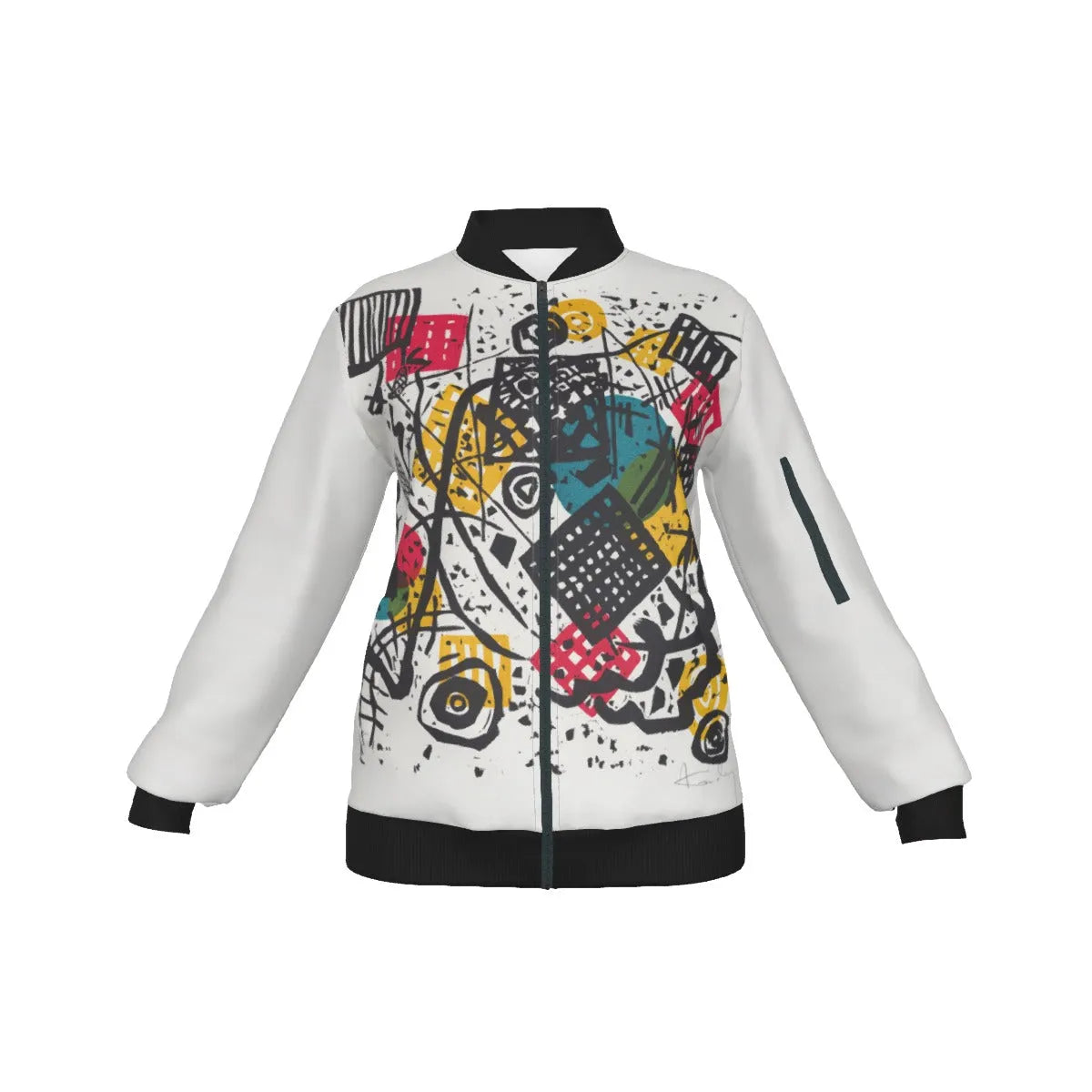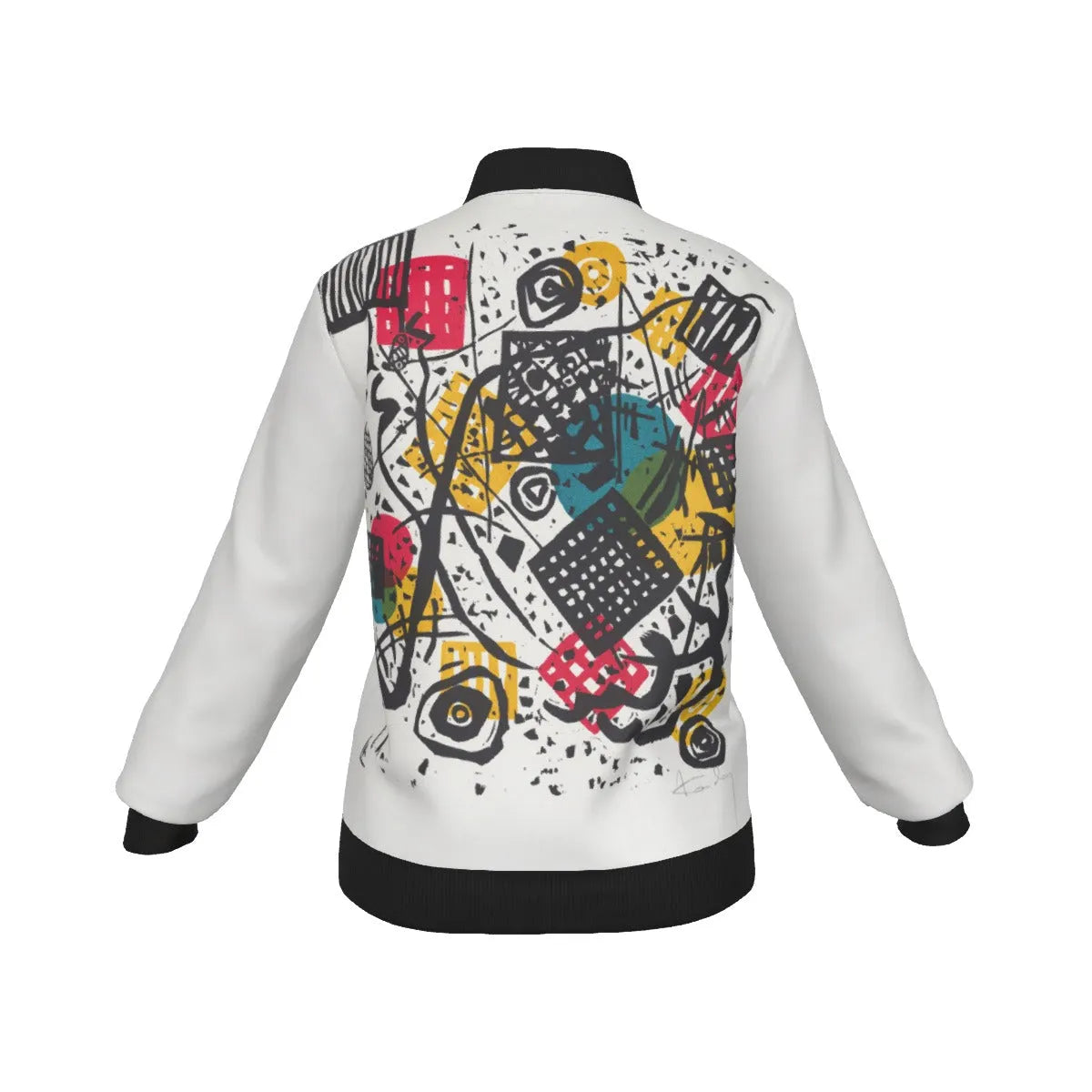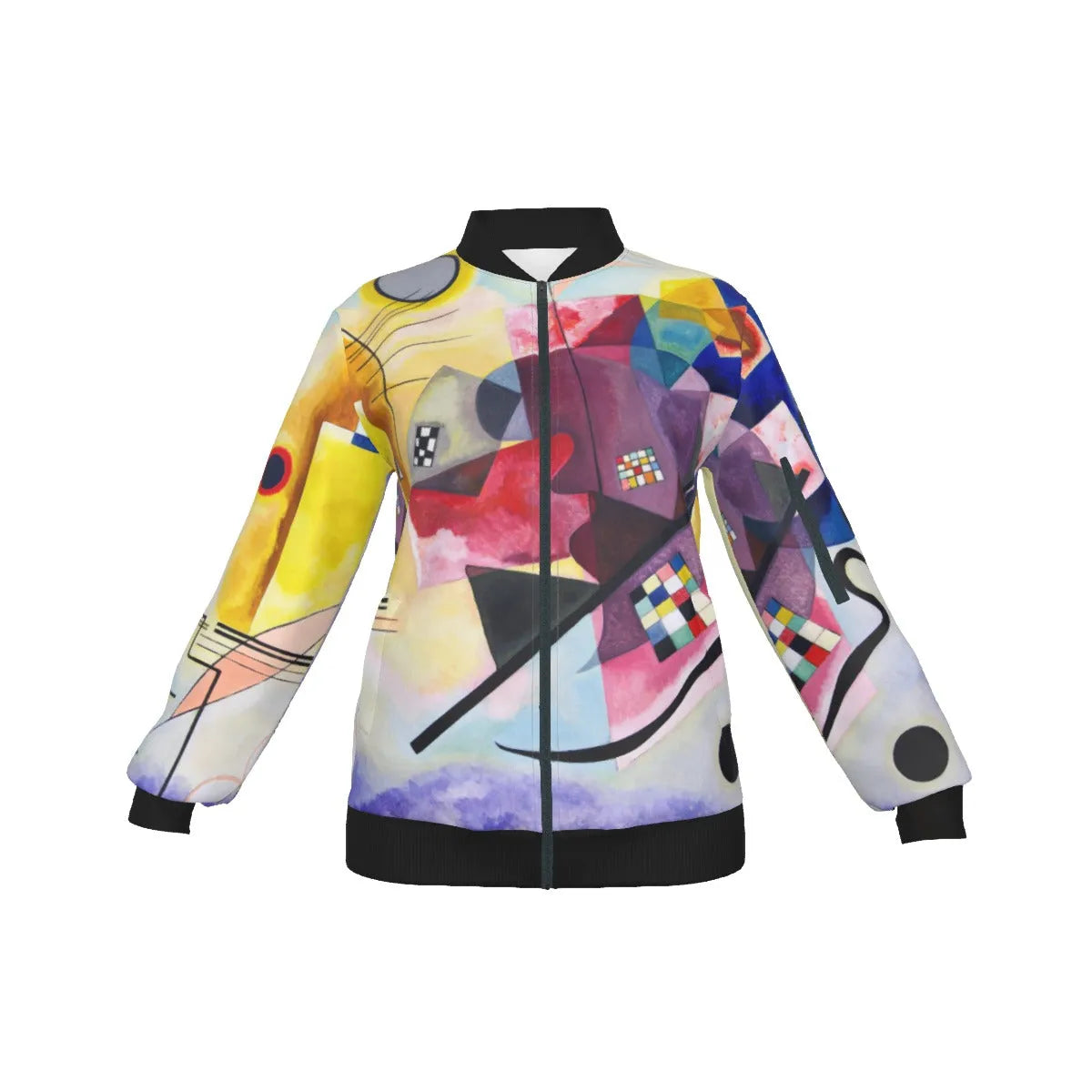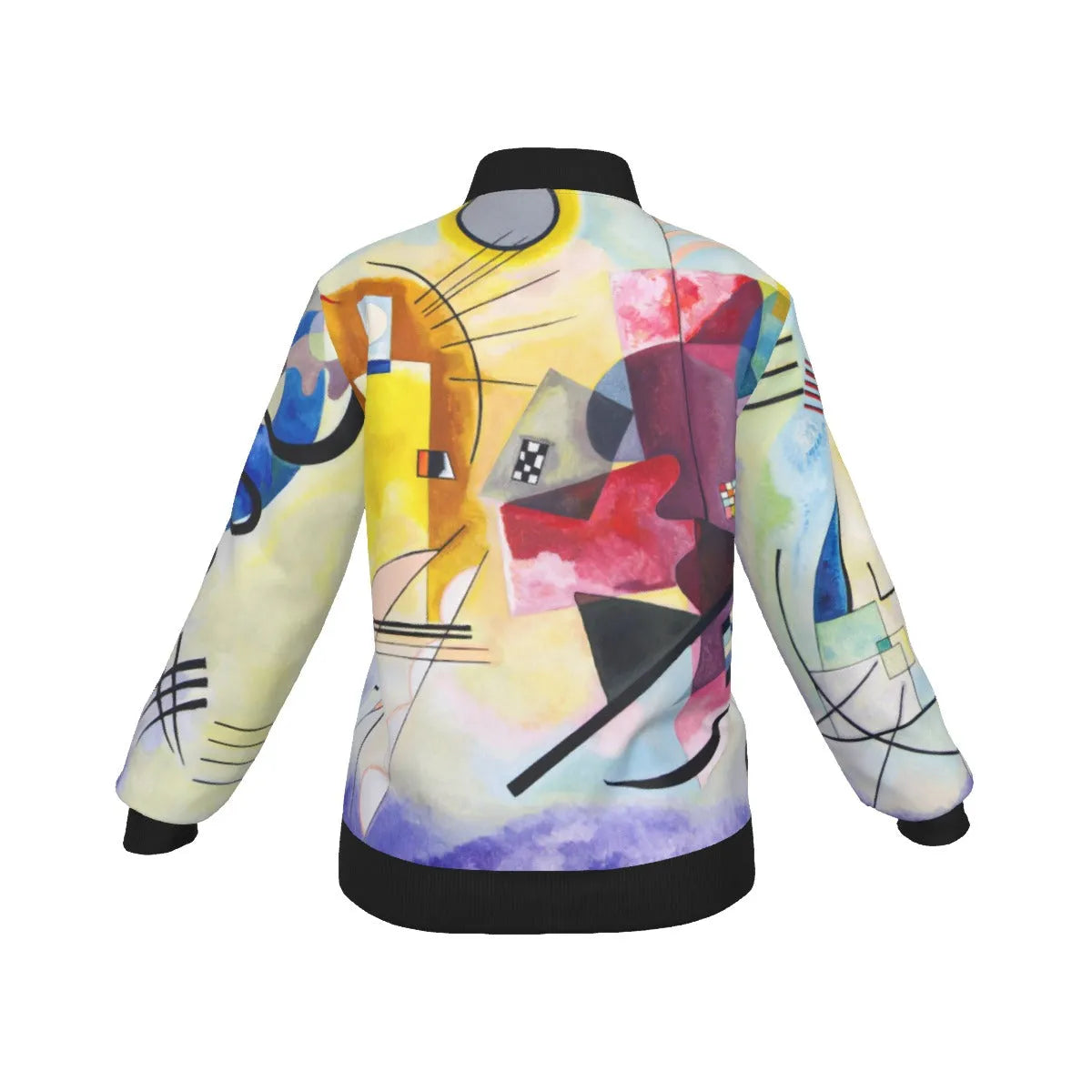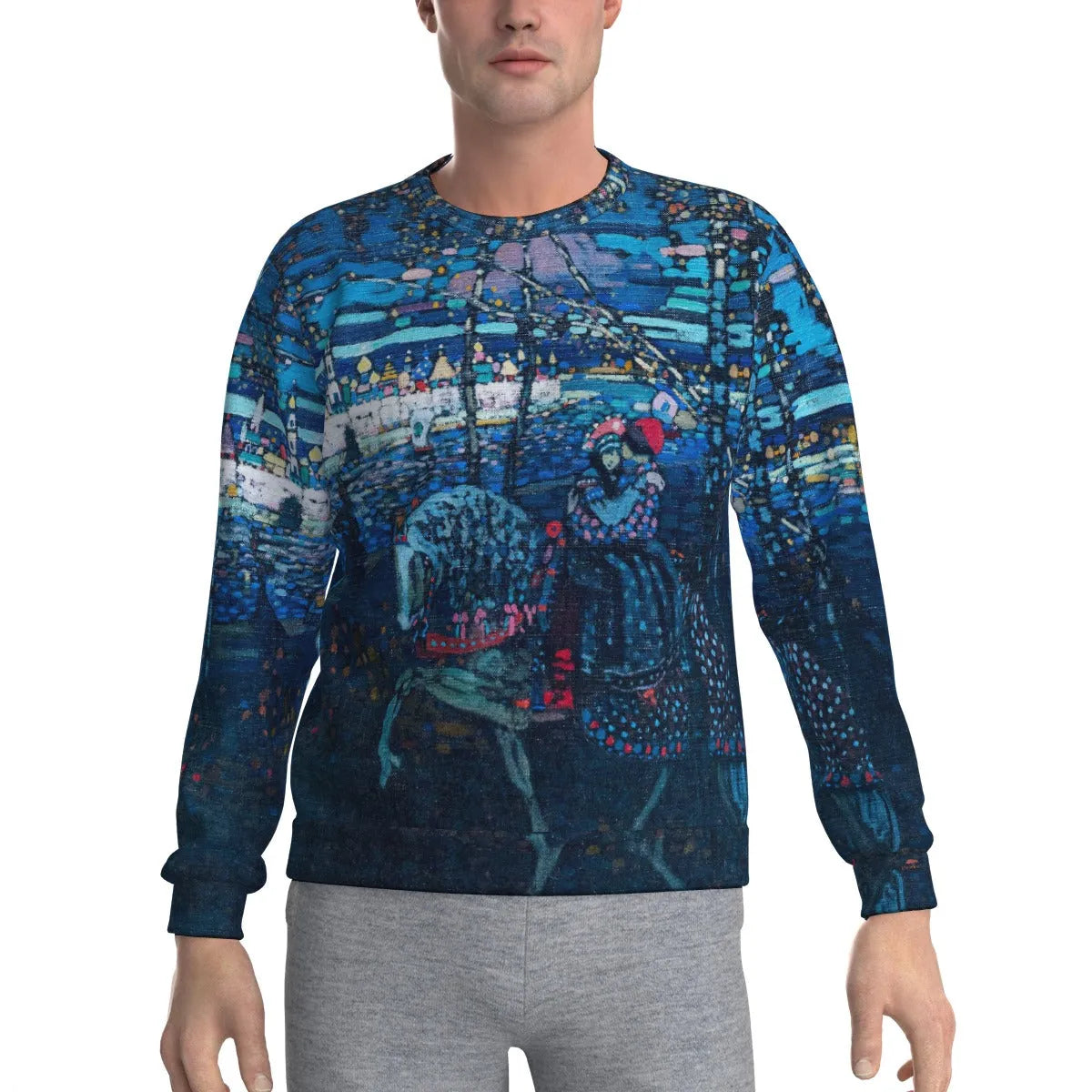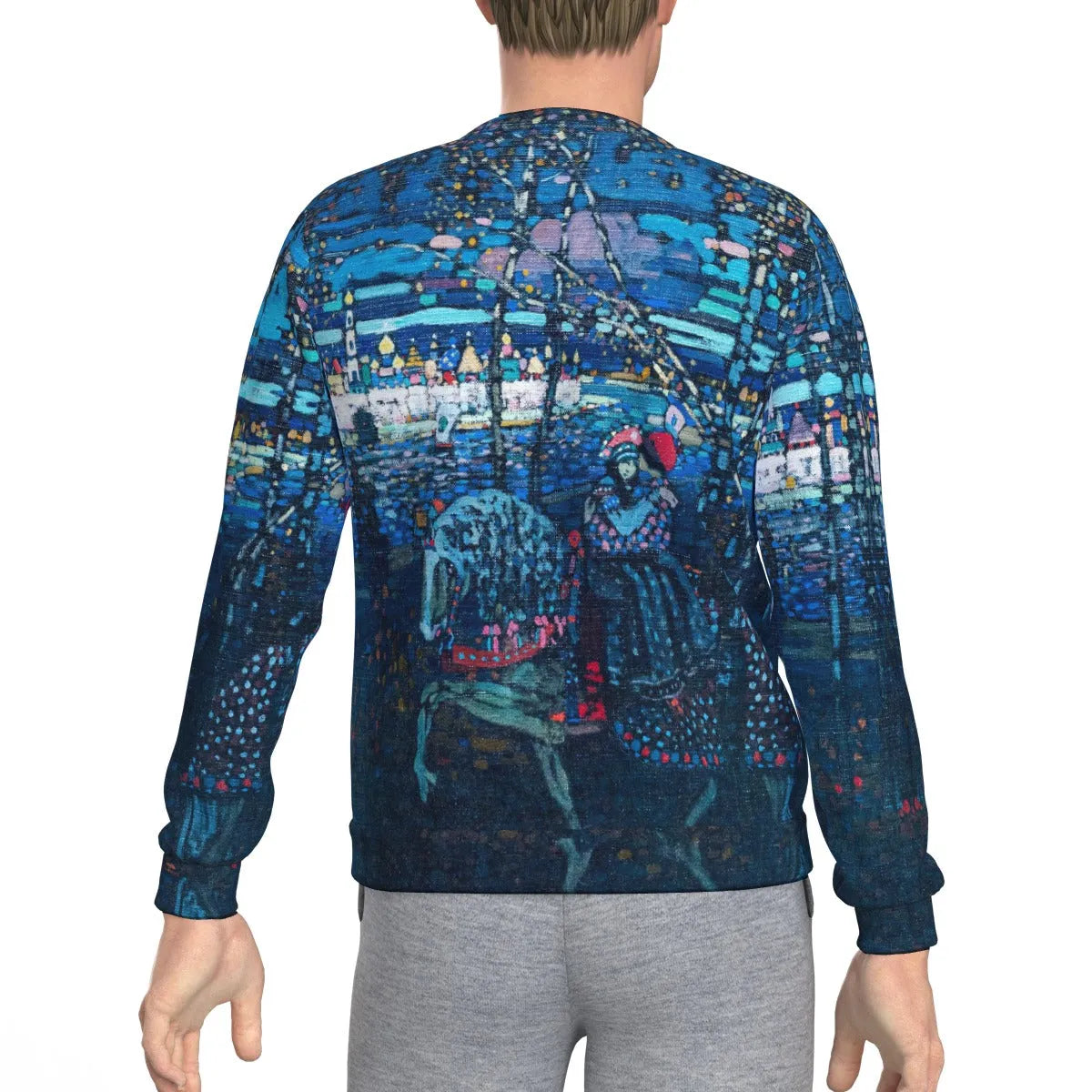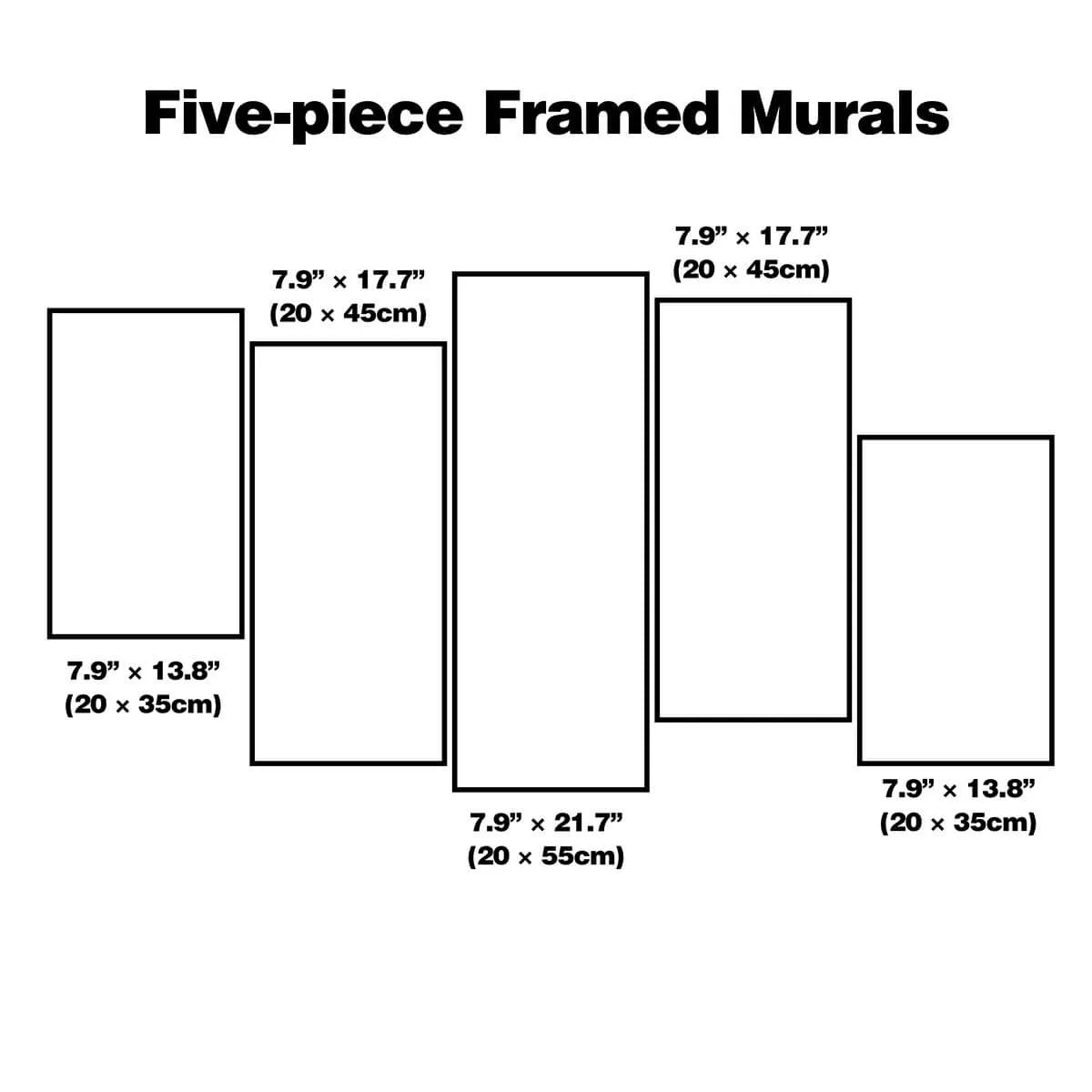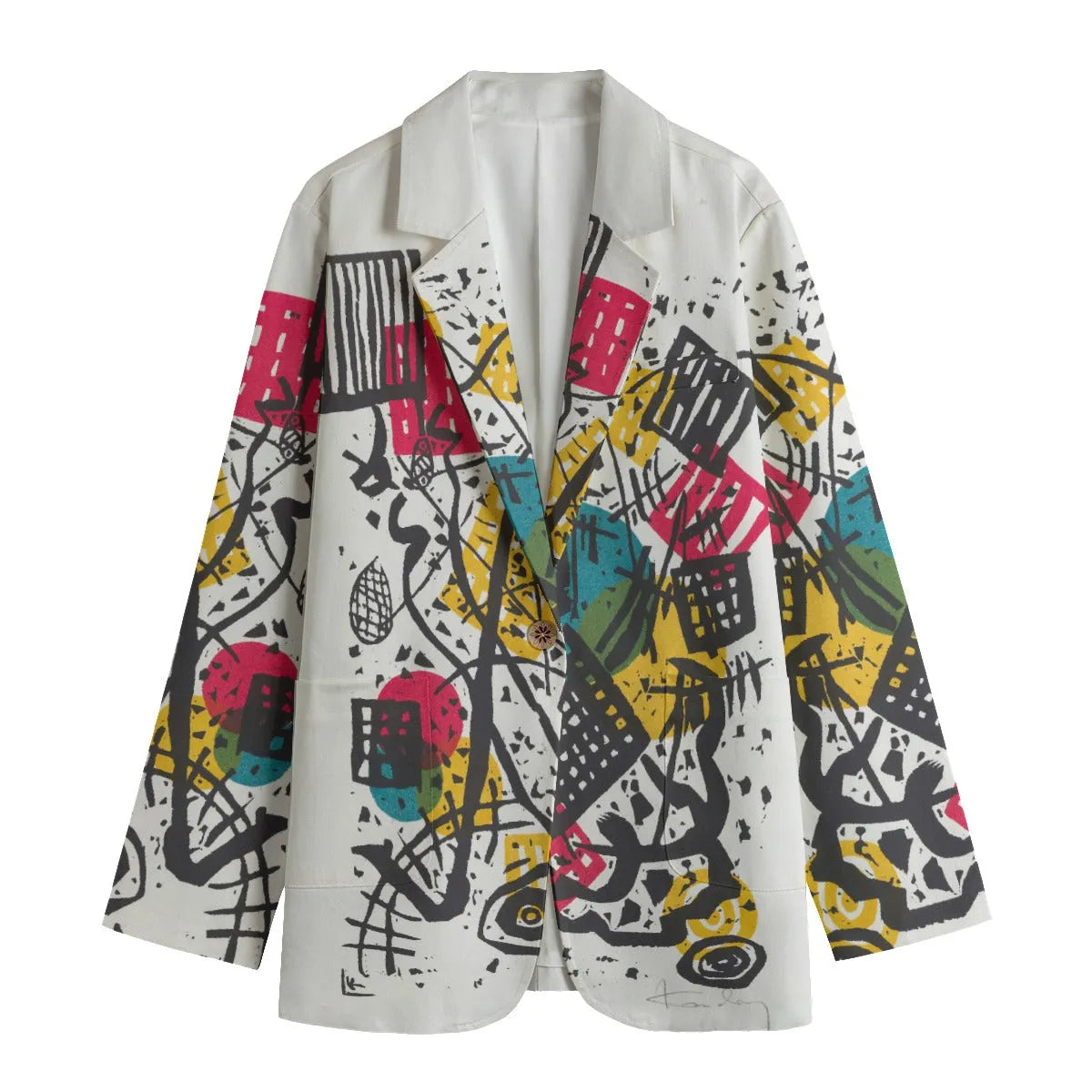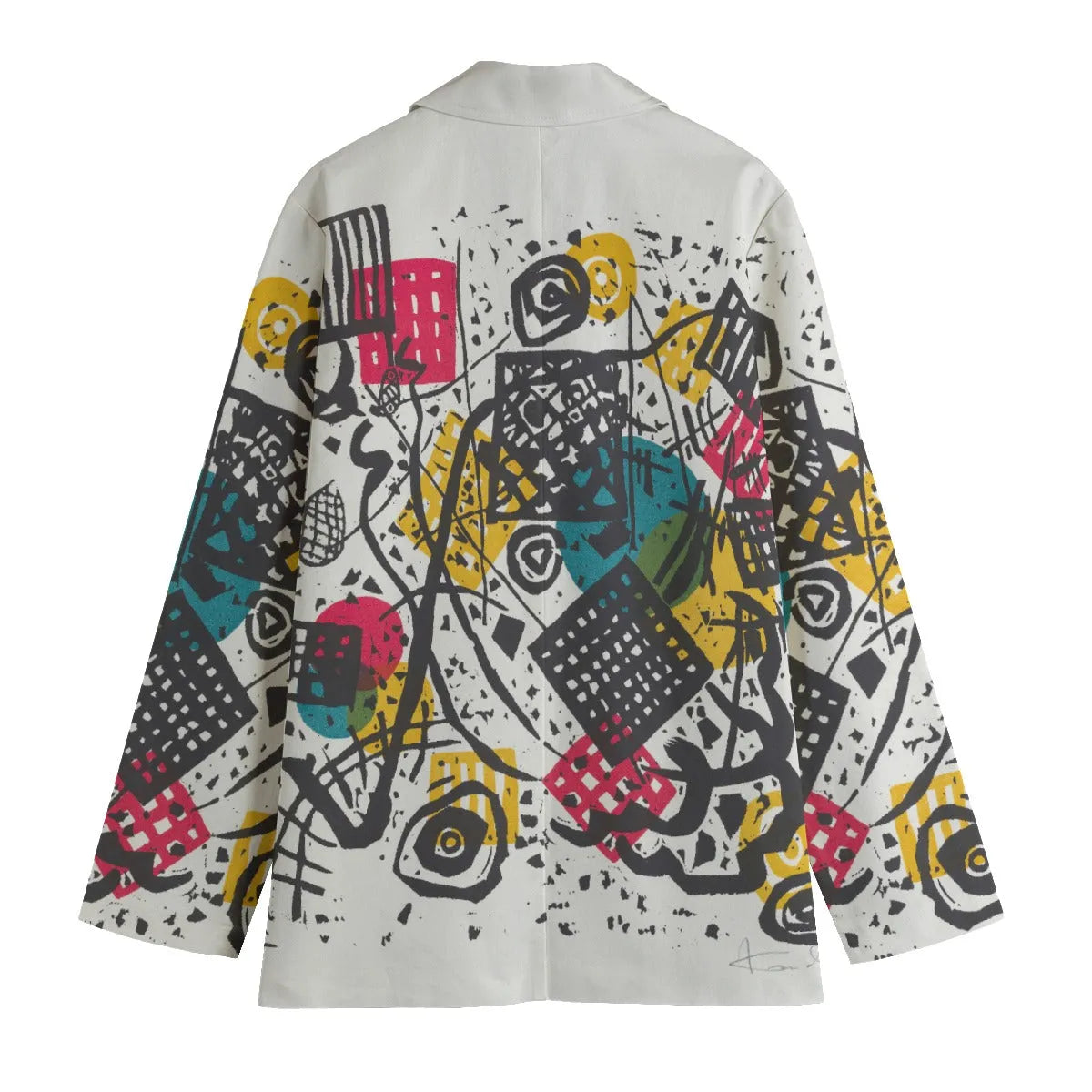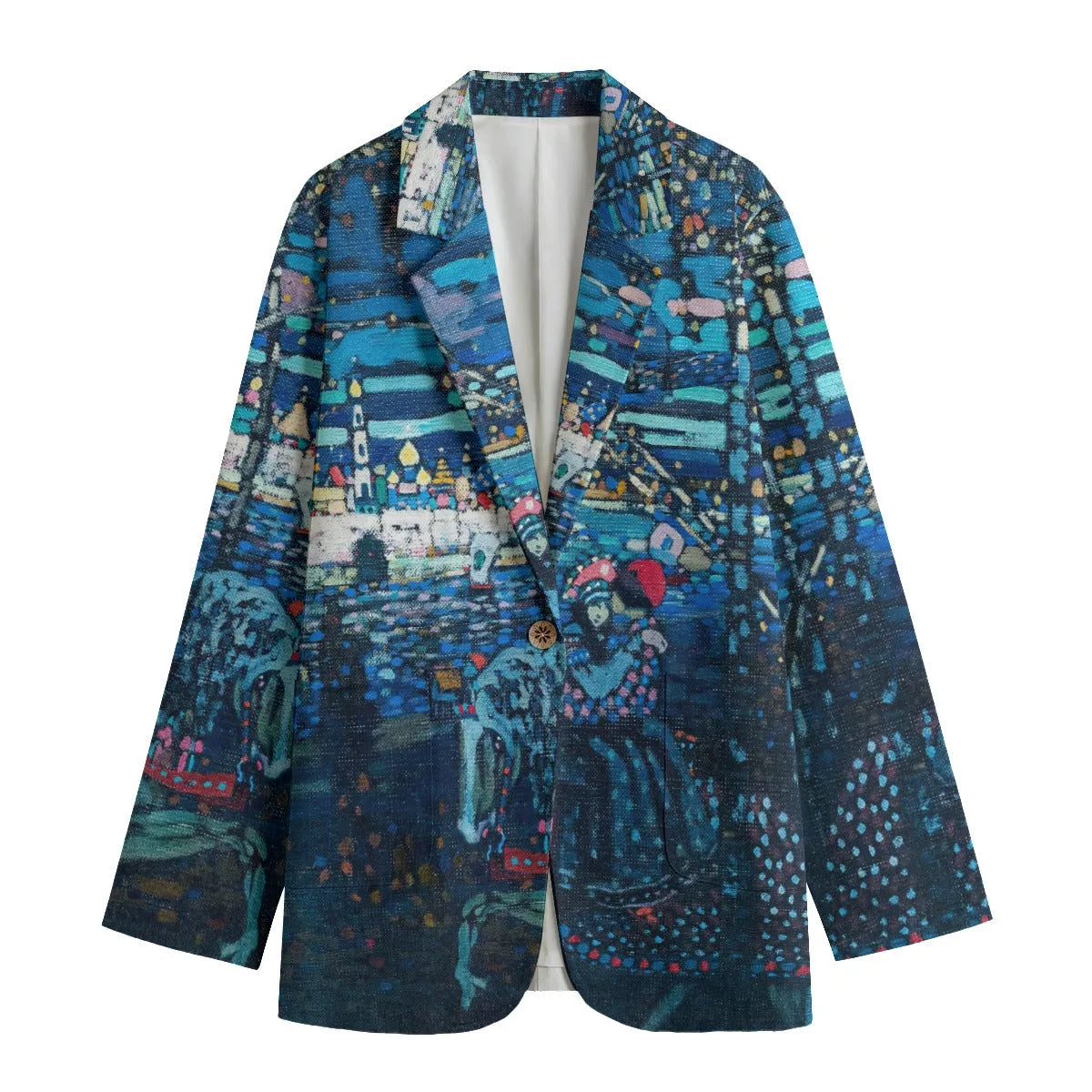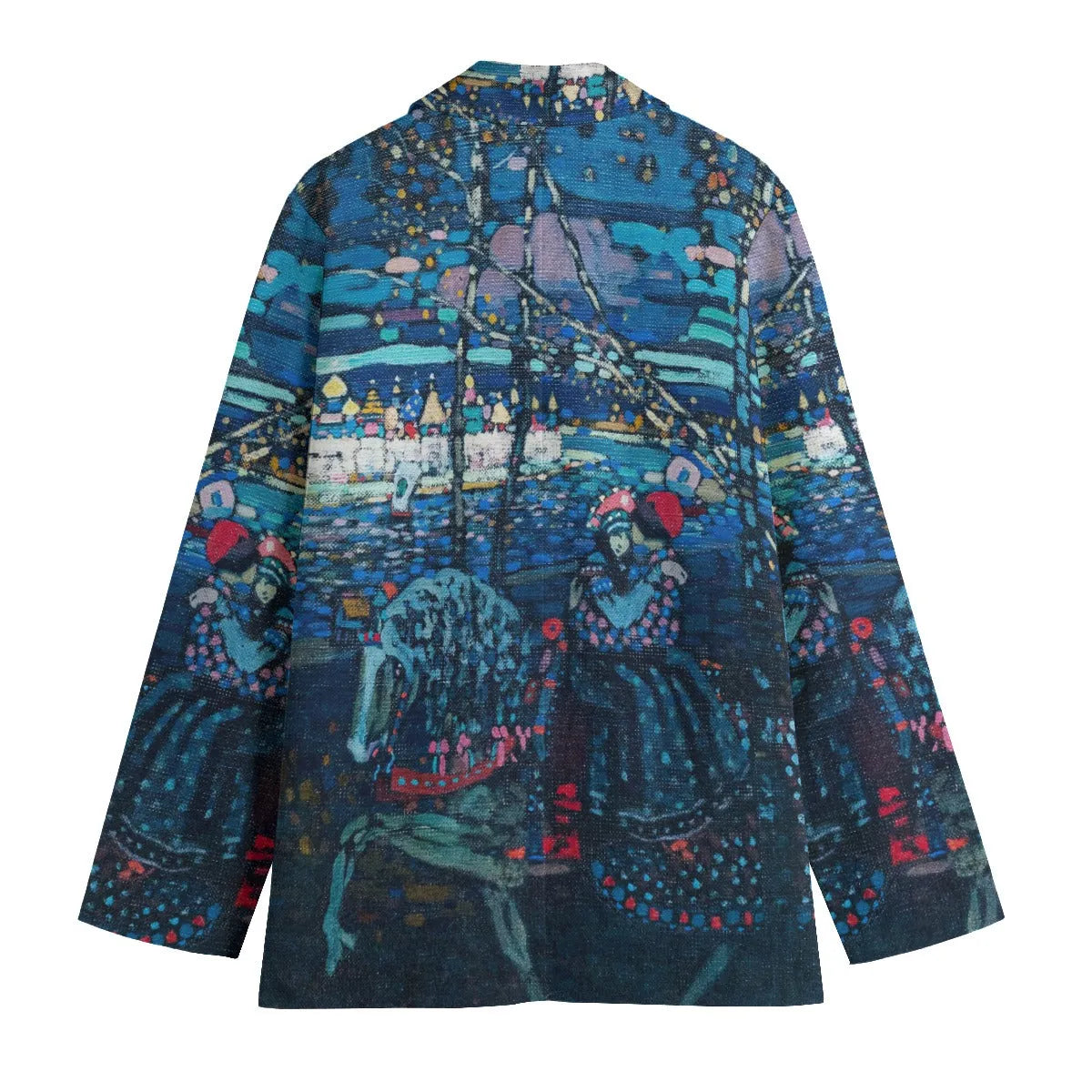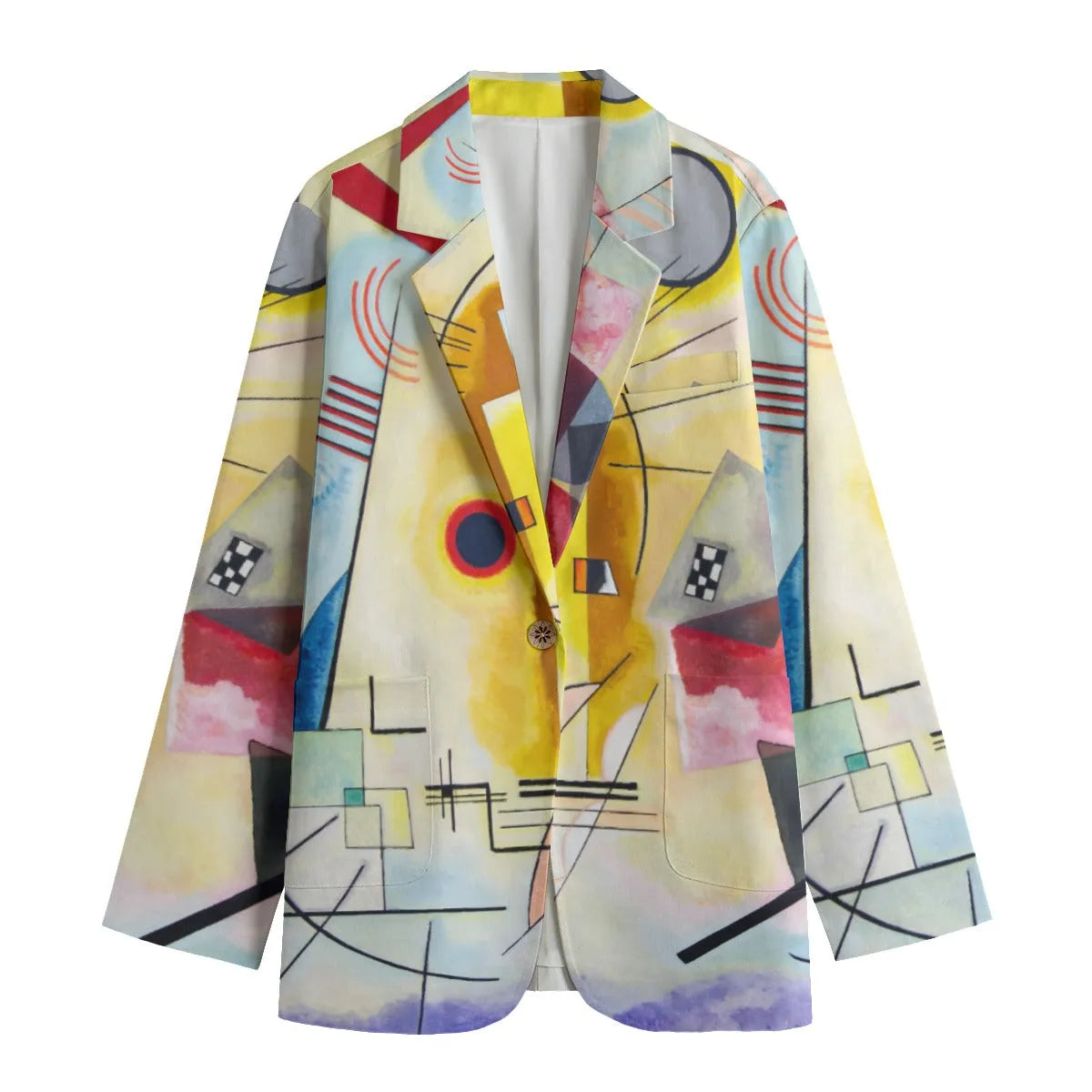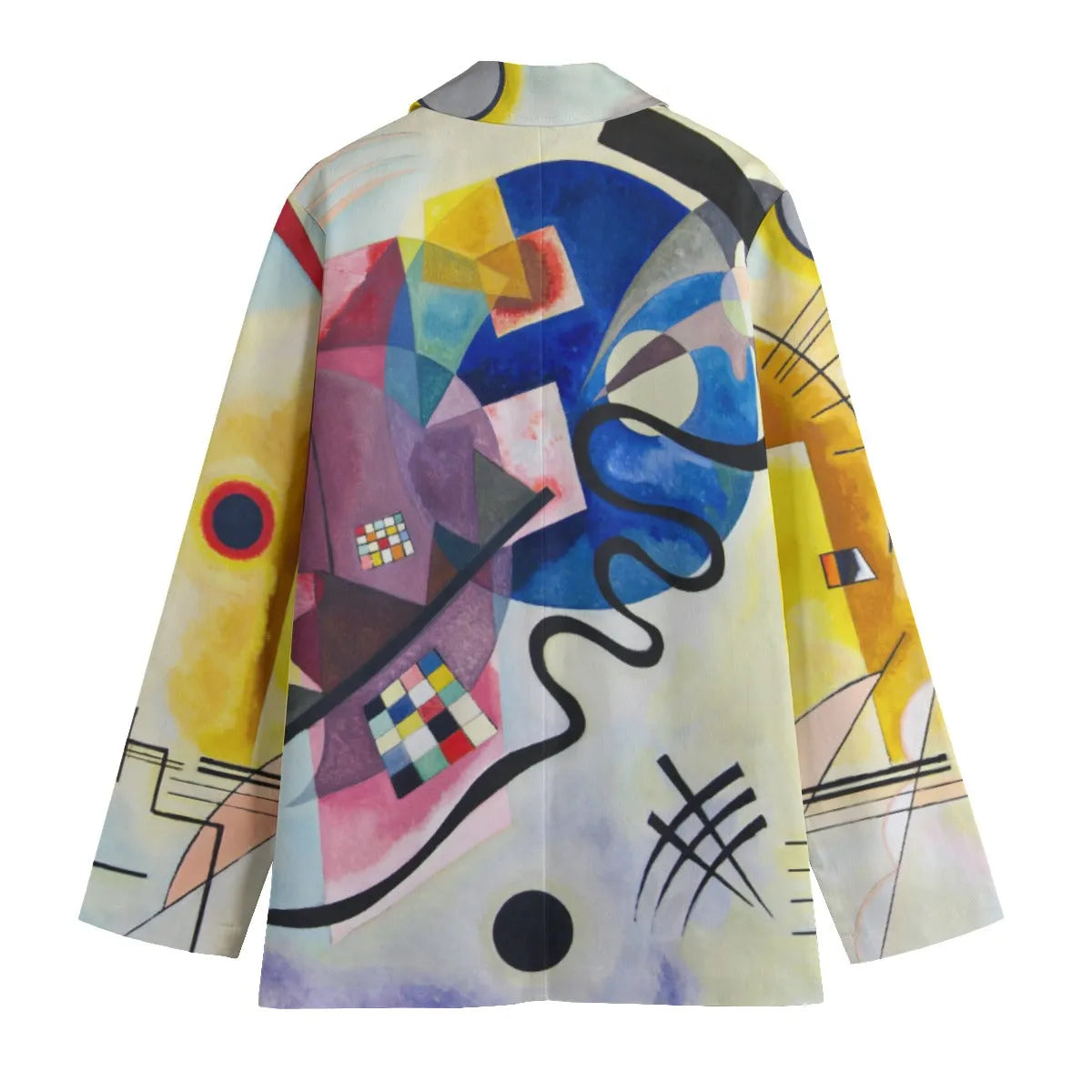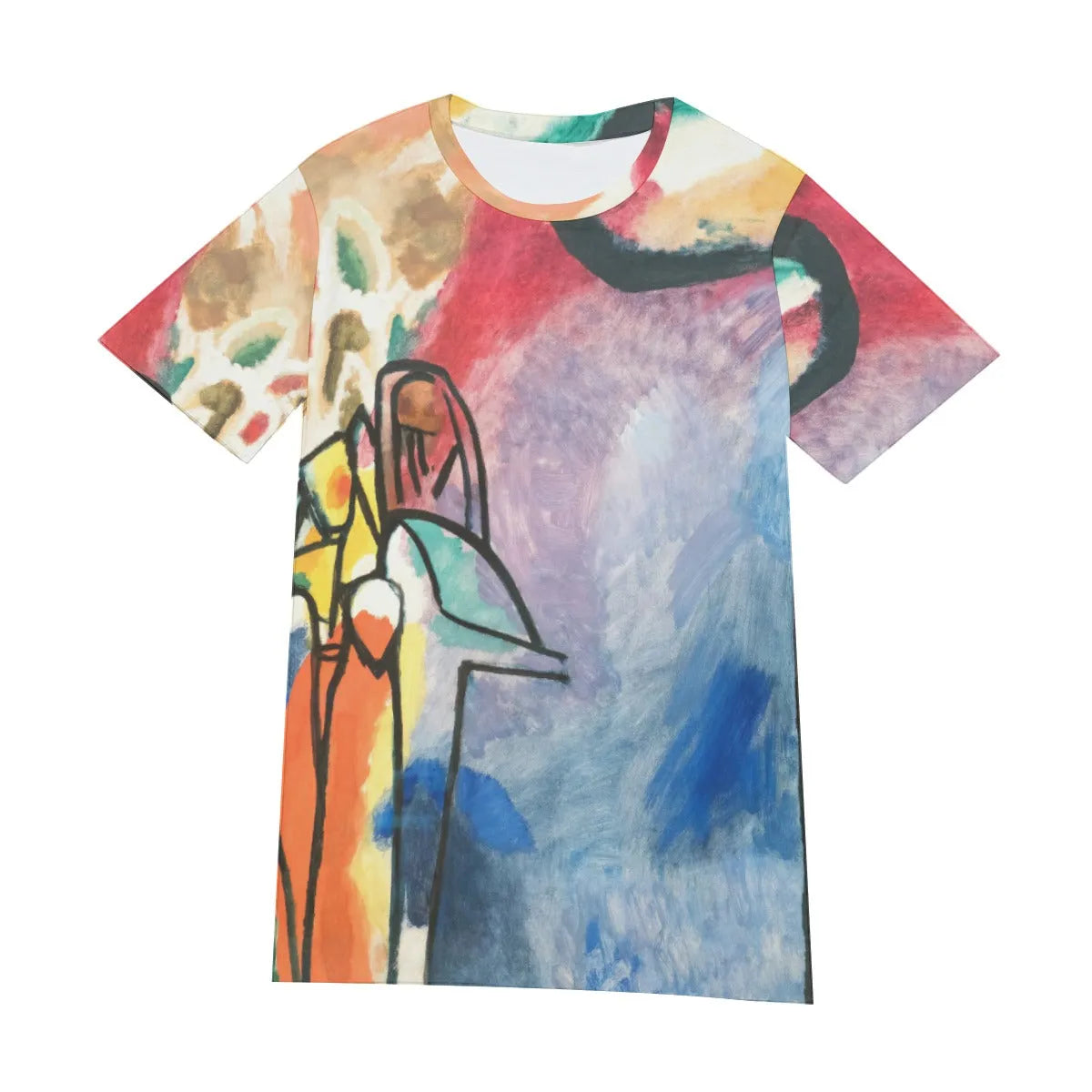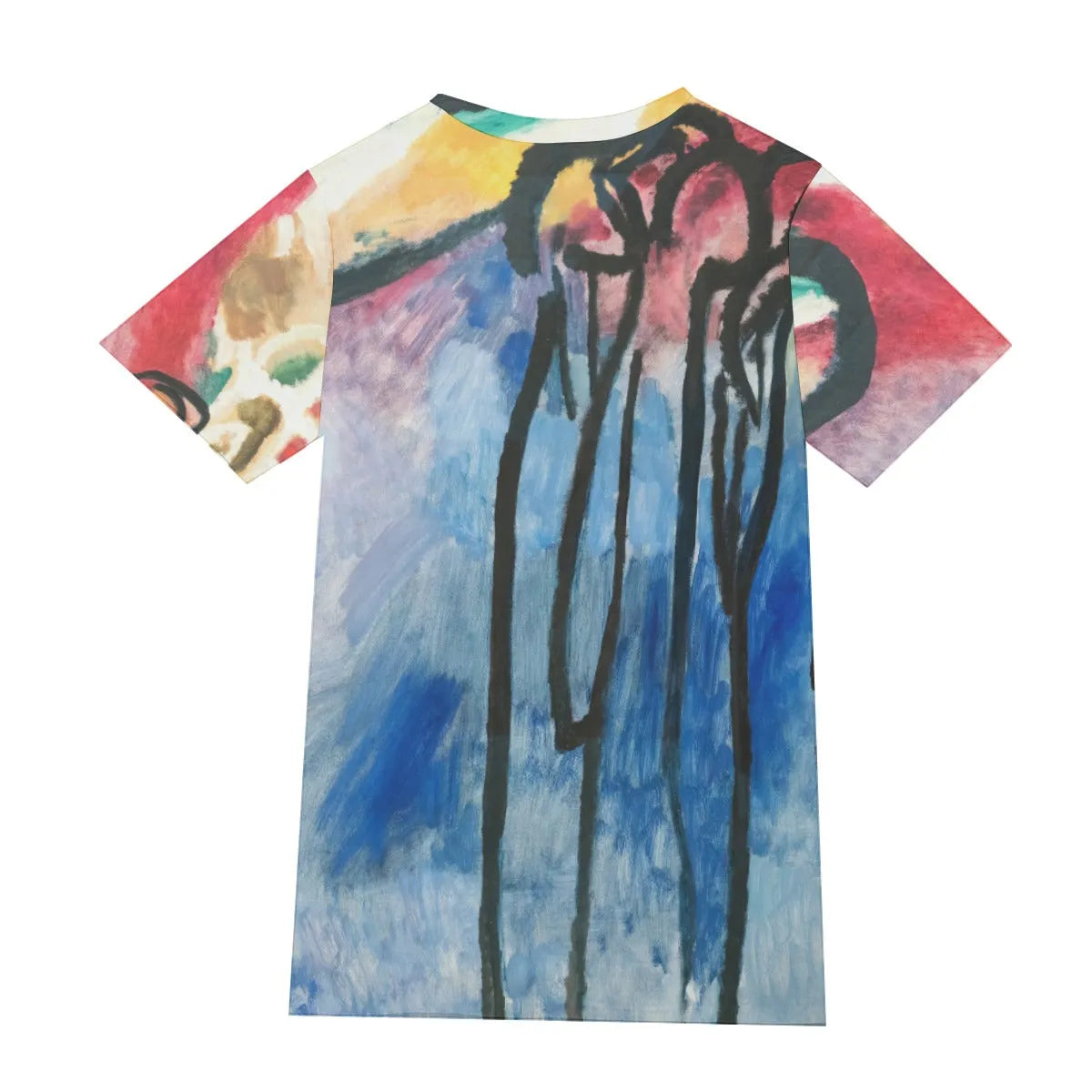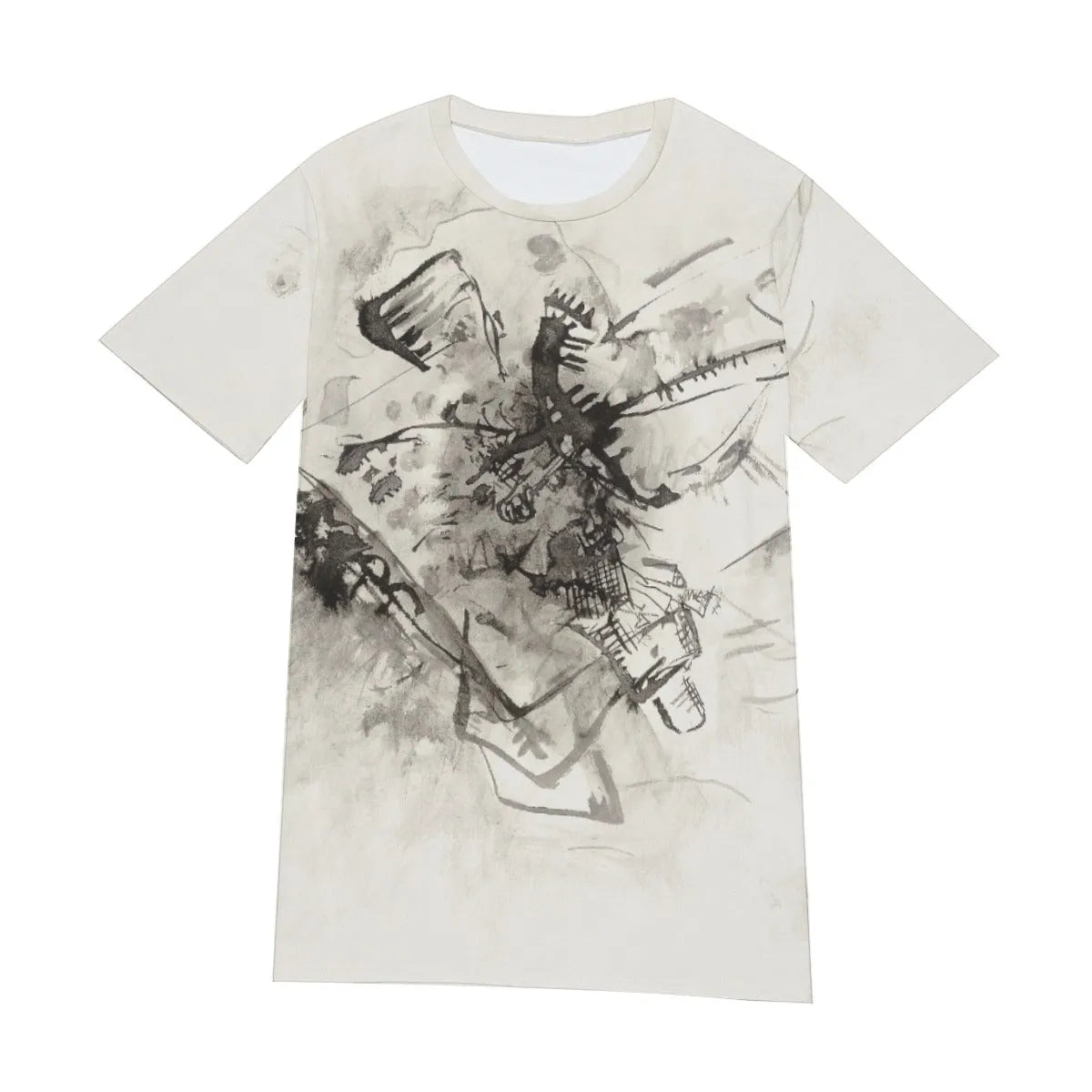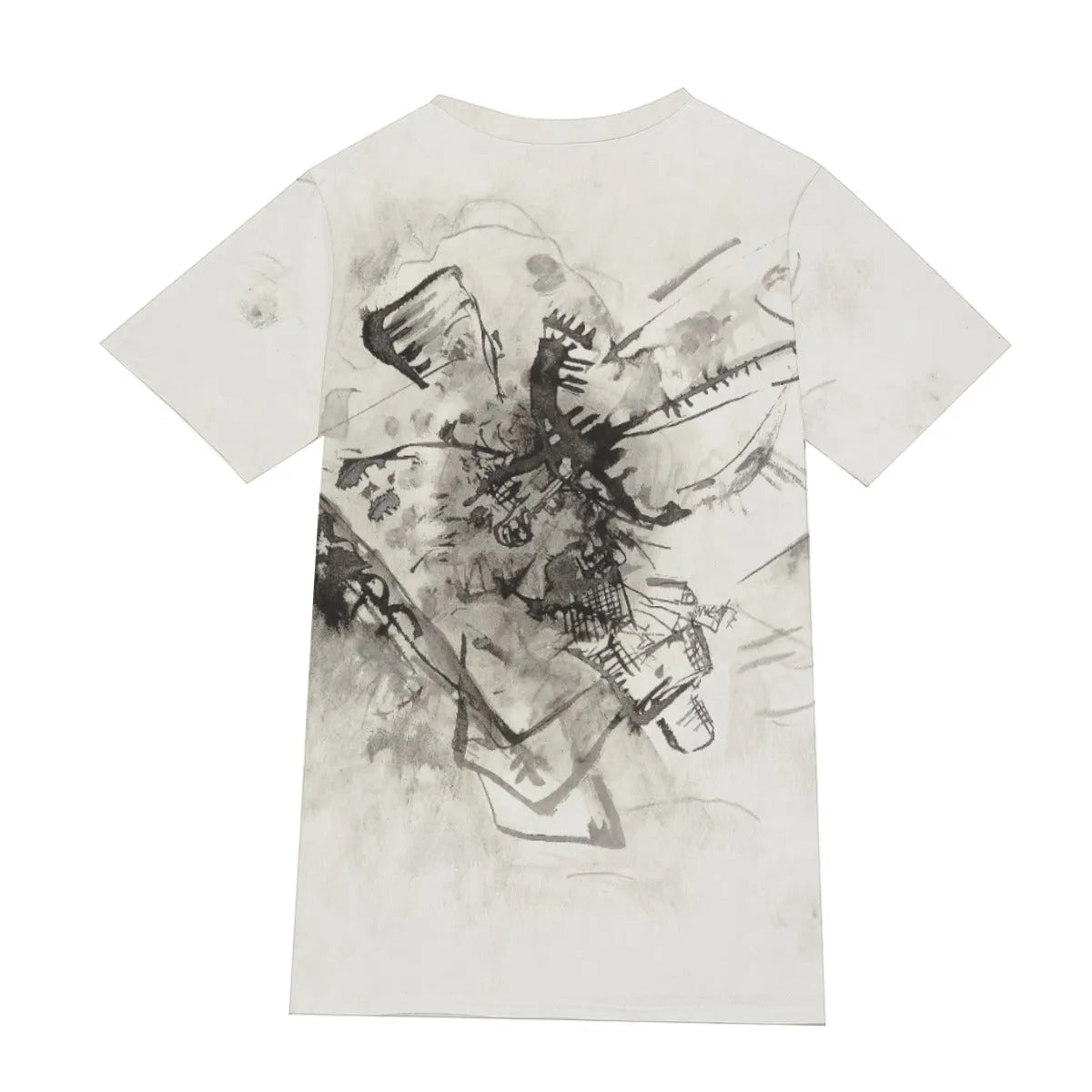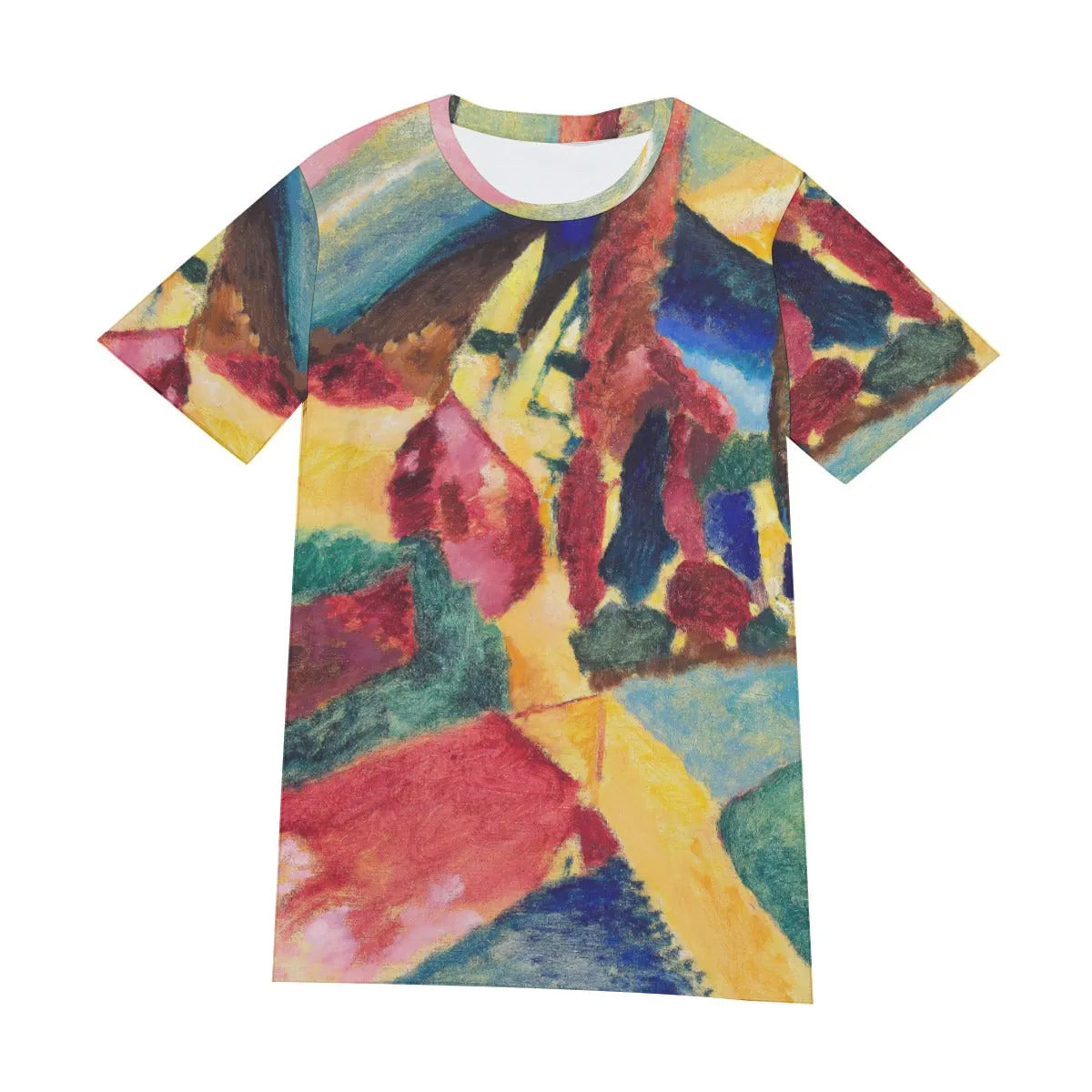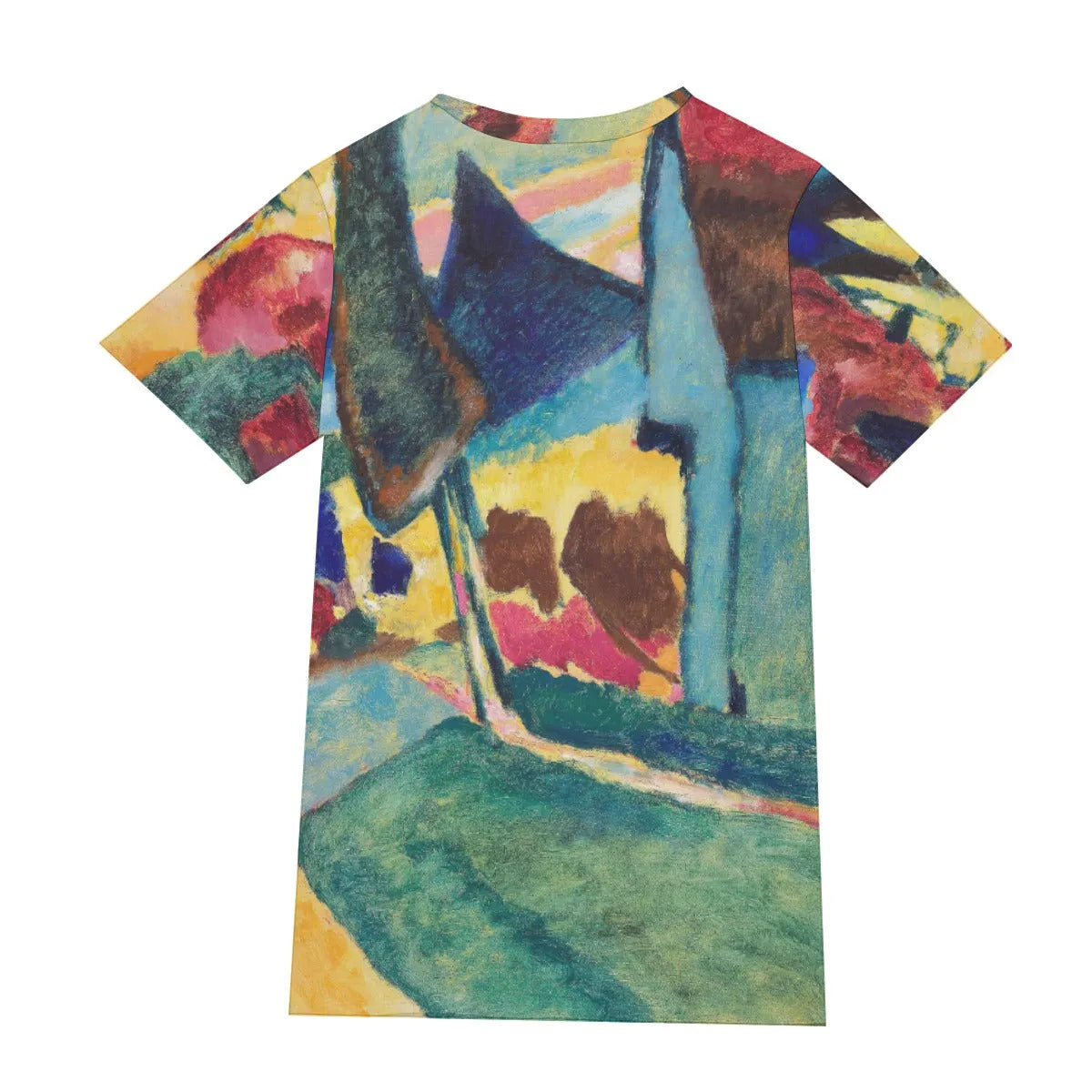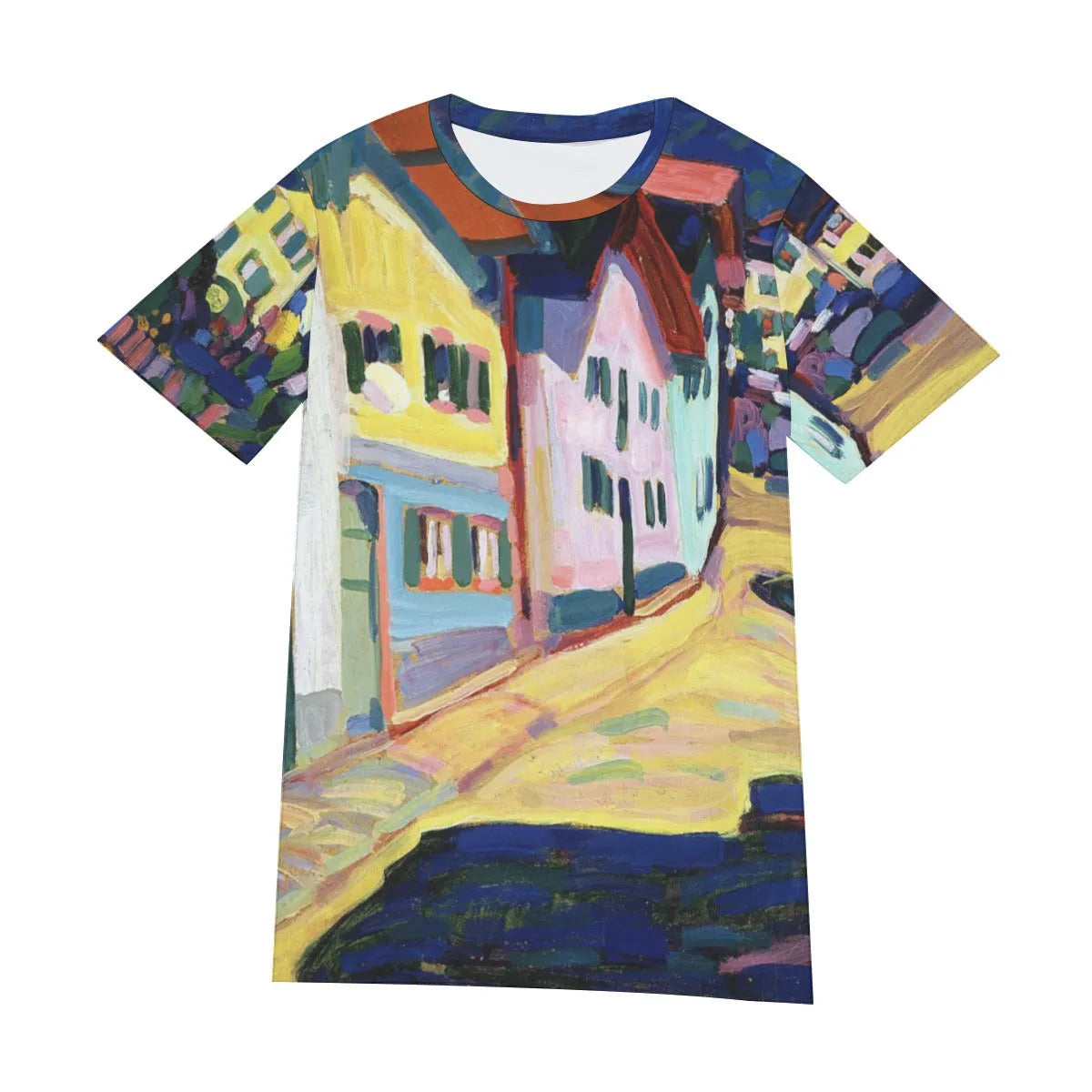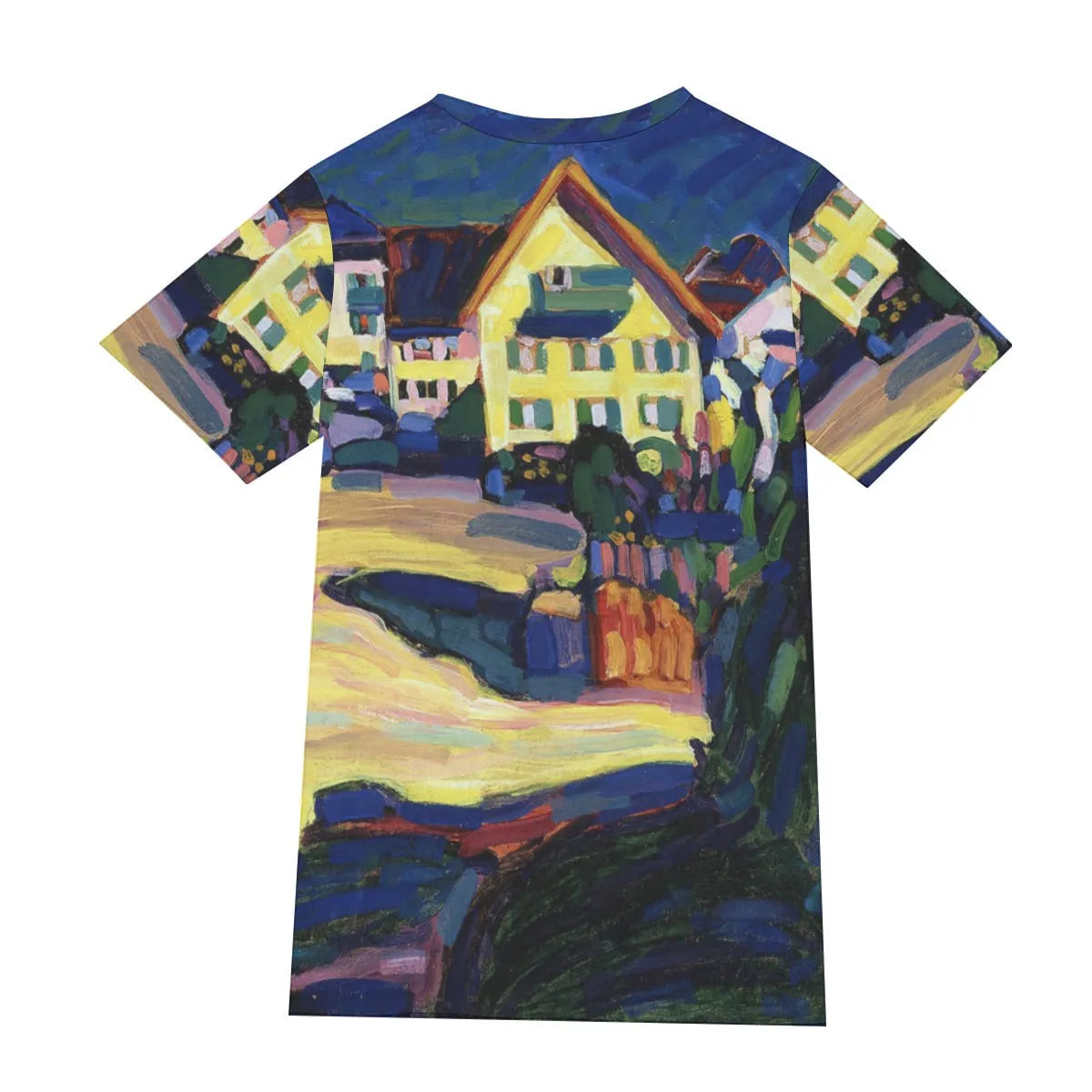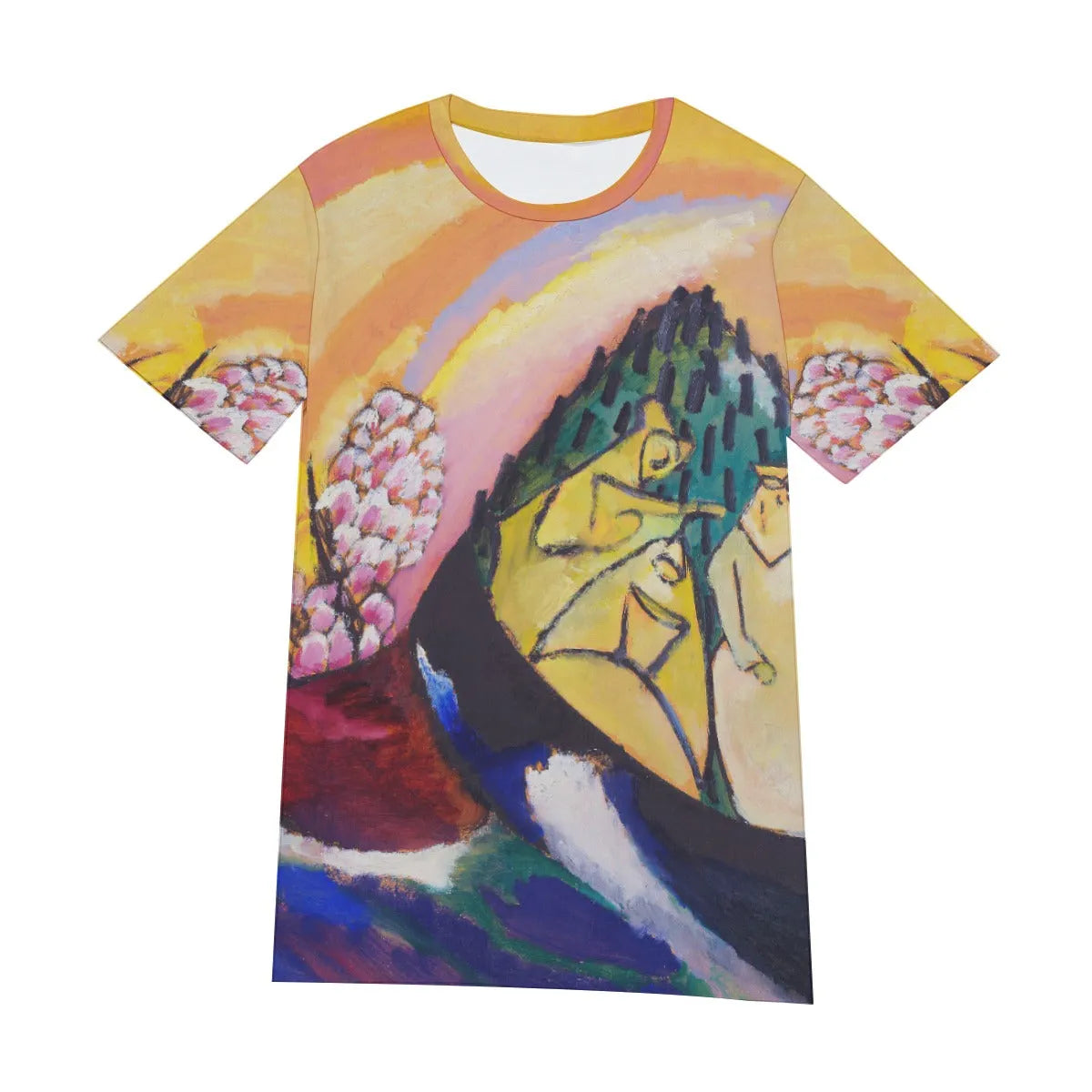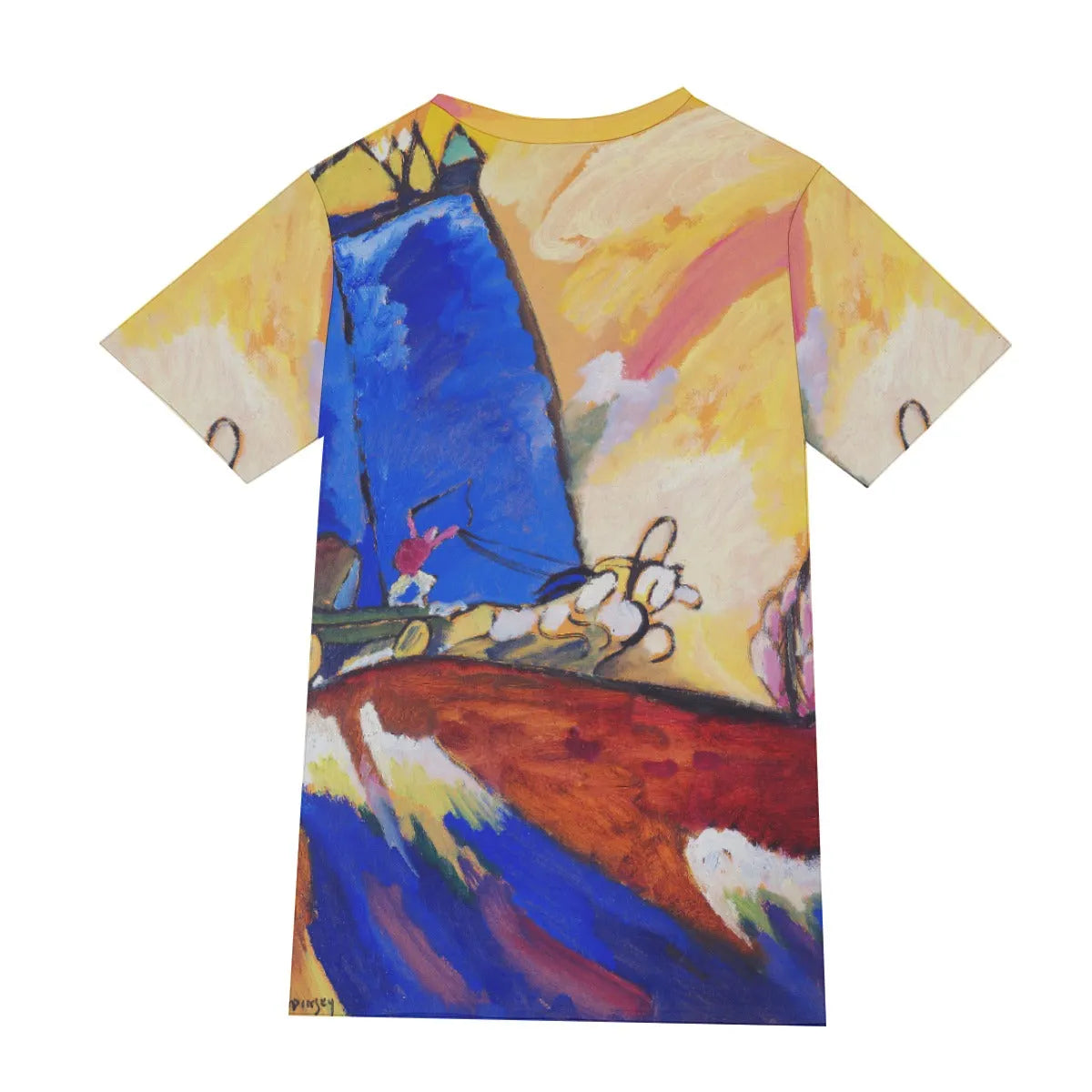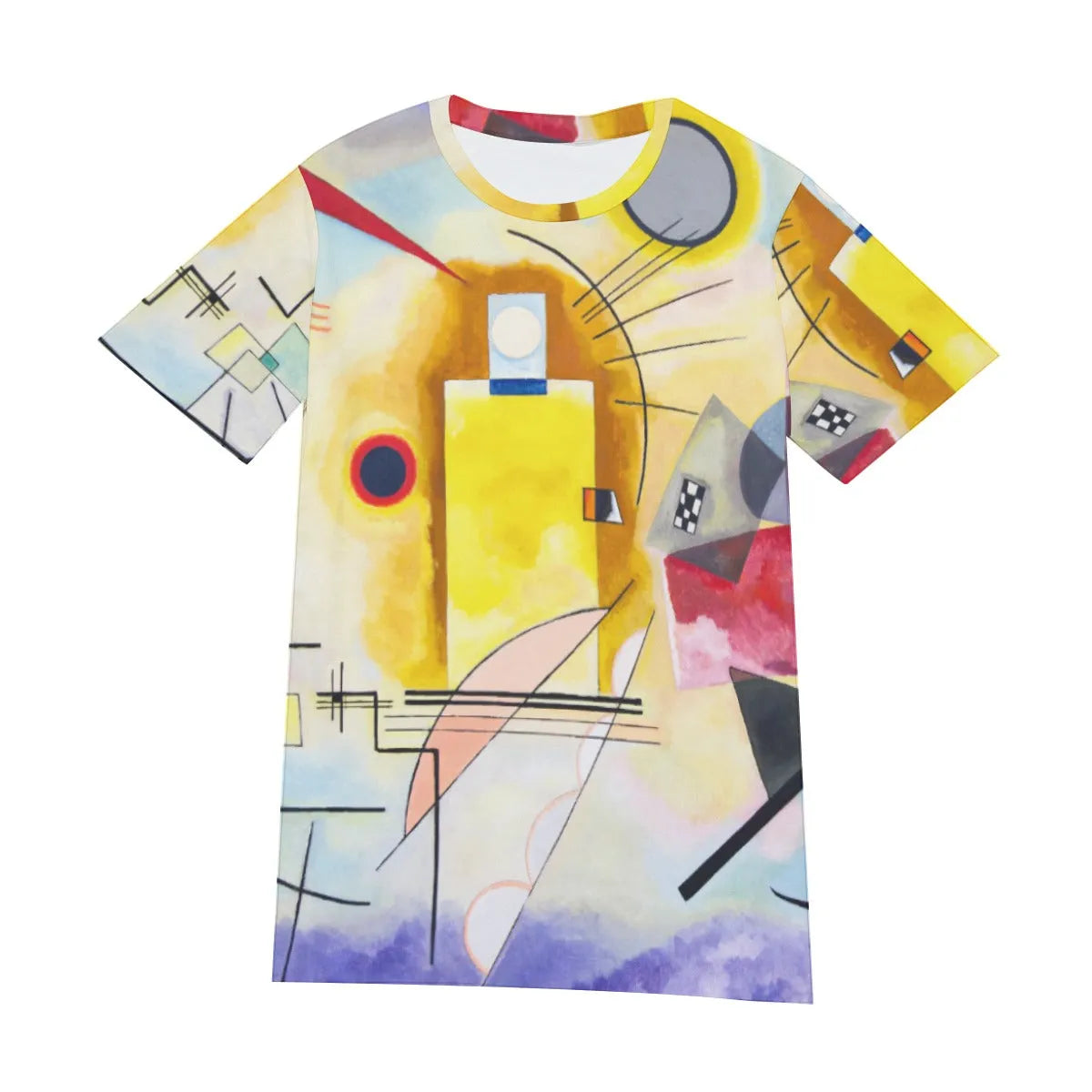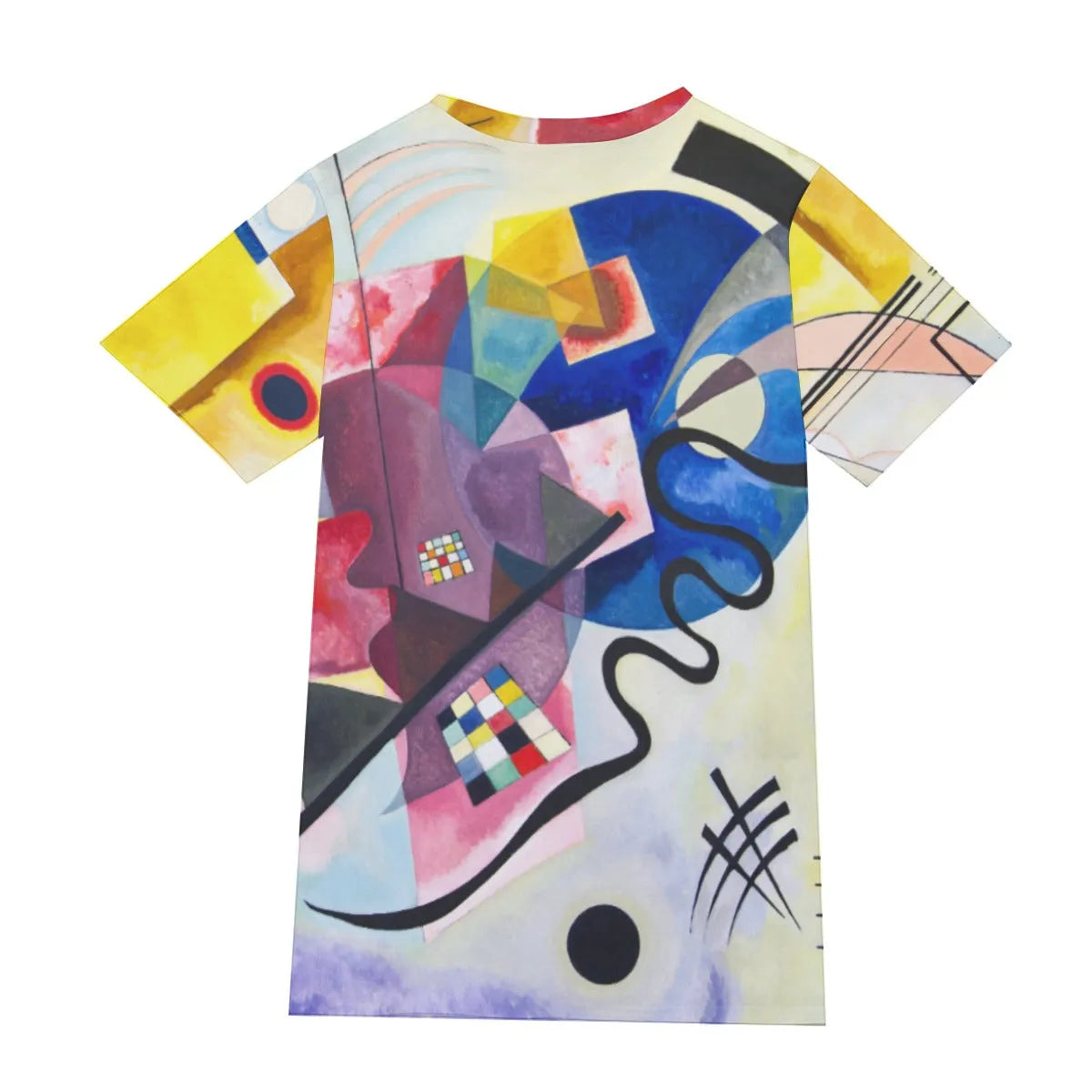Wassily Kandinsky was one of the most original and influential artists of the twentieth century and a pioneer of abstract painting. His “inner necessity” to express his emotional perceptions led to the development of an abstract style of painting, based on the non-representational properties of color and form. His visual vocabulary developed through three phases, shifting from his early, representational canvases and their divine symbolism to his rapturous and operatic compositions, to his late, geometric and biomorphic flat planes of color. Kandinsky’s art and ideas inspired many generations of artists, from his students at the Bauhaus to the Abstract Expressionists after World War II. In this article, we will explore the life and work of Wassily Kandinsky, focusing on his paintings and their style, meaning, and influence. We will also provide some tips on how to appreciate and understand his abstract art, and some examples of his most famous and representative works.
Early Life and Influences
Wassily Kandinsky was born on December 4, 1866, in Moscow, Russia. He came from a well-educated and cultured family, and showed an early interest in art, music, and literature. He learned to play the piano and the cello, and was fascinated by color and its effects on the senses. He once recalled that he saw colors as sounds and sounds as colors, a condition known as synesthesia. He also had a vivid imagination and a spiritual outlook, influenced by his Orthodox Christian upbringing and his exposure to various religions and philosophies.
Kandinsky studied law and economics at the University of Moscow, where he graduated with honors in 1892. He then worked as a lecturer and a lawyer, but he felt dissatisfied with his career and his life. He decided to pursue his passion for art, and moved to Munich, Germany, in 1896, at the age of 30. There, he enrolled at the Academy of Fine Arts, and studied under the guidance of Franz von Stuck, a Symbolist painter. He also visited various European cities, such as Paris, Amsterdam, and Venice, and encountered the works of the Impressionists, the Post-Impressionists, and the Fauves, who used bright and expressive colors to capture light and mood. He was particularly impressed by the paintings of Claude Monet, especially his Haystacks series, which showed the same subject in different lighting conditions and times of the day. Kandinsky realized that color could be used to convey emotions and sensations, rather than just to depict reality.
Kandinsky’s early paintings were mostly landscapes and scenes from Russian folk art, such as fairy tales and legends. He used vibrant and contrasting colors, and experimented with different techniques and styles. He also incorporated elements of symbolism and spirituality, as he believed that art was a way to communicate with the divine and the inner self. Some of his early works include The Blue Rider (1903), The Last Judgment (1912), and Old Town II (1902).
The Blue Rider Period
In 1911, Kandinsky founded an artistic group called Der Blaue Reiter (The Blue Rider), along with other avant-garde artists, such as Franz Marc, August Macke, and Paul Klee. The name of the group was inspired by Kandinsky’s painting of the same title, which featured a horseman riding across a landscape. The blue rider symbolized the artist’s quest for spiritual and artistic freedom, and his rejection of the conventional and the mundane. The group shared a common vision of creating a new art that would transcend the boundaries of realism and express the inner world of the artist. They also organized exhibitions, published a journal, and wrote a manifesto, in which they stated their principles and goals.
Kandinsky’s paintings from this period became more abstract and expressive, and featured motifs such as circles, lines, and horses. He used colors and shapes to create musical and emotional effects, and to evoke sounds and sensations. He also wrote a book, titled Concerning the Spiritual in Art, in which he explained his theory of art and his classification of colors and forms. He argued that art should be free from representational constraints, and that abstract art was the ideal mode to express the “inner necessity” of the artist and to convey universal human emotions and ideas. He also claimed that colors and forms had their own meanings and associations, and that they could be combined to create harmonies and contrasts, similar to musical compositions. He compared the painter to a composer, and the painting to a symphony. Some of his paintings from this period include Composition IV (1911), Improvisation 28 (1912), and Black Lines (1913).
The Bauhaus Period
In 1914, after the outbreak of World War I, Kandinsky returned to Moscow, where he became involved in the cultural and educational reforms of the Russian Revolution. He helped establish the Museum of the Culture of Painting, and taught at the Moscow Svomas (Free State Art Studios). However, he soon felt alienated and isolated from the Soviet society, which favored a more realistic and social-oriented art. He also faced censorship and criticism from the authorities, who considered his abstract art as decadent and bourgeois. In 1921, he left Russia and moved back to Germany, where he joined the Bauhaus, a school of art and design founded by Walter Gropius. The Bauhaus aimed to unify art, craft, and technology, and to create a functional and modern aesthetic. Kandinsky taught the basic design class, and later the advanced theory class, where he introduced his ideas on form psychology, color theory, and geometric abstraction. He also conducted experiments on the effects of colors and shapes on human perception and behavior.
Kandinsky’s paintings from this period became more geometric and biomorphic, and reflected his teaching at the Bauhaus. He used simple shapes, such as circles, triangles, and squares, and primary colors, such as red, yellow, and blue, to create compositions that were balanced and harmonious. He also used black and white to create contrast and tension, and to emphasize the dynamic movement of the forms. He continued to explore the musical and spiritual aspects of his art, and to create series of paintings with titles such as Compositions, Improvisations, and Impressions. Some of his paintings from this period include Yellow-Red-Blue (1925), Several Circles (1926), and Composition VIII (1923).
The Paris Period
In 1933, the Nazis closed the Bauhaus, and Kandinsky moved to Paris, where he lived for the rest of his life. He became a French citizen in 1939, and continued to paint and write. He was mostly isolated from the other artists, who were either involved in Surrealism or Abstraction-Création, two movements that he did not fully identify with. He also faced difficulties in exhibiting and selling his work, as the public and the critics were not very receptive to his abstract art. He found some support and recognition from his old friends, such as Paul Klee and Piet Mondrian, and from some younger artists, such as Jean Arp and Joan Miró.
Kandinsky’s paintings from this period became more organic and biomorphic, and featured forms that resembled microscopic organisms, plants, and animals. He used a more diverse and subdued palette, and experimented with different textures and materials, such as sand, plaster, and newspaper. He also incorporated elements of collage and montage, and used curved and angular lines to create complex and intricate patterns. He maintained his interest in music and spirituality, and named some of his paintings after musical terms, such as Tempered Élan (1944), Mild Tension (1937), and Dominant Curve (1936).
How to Appreciate and Understand Kandinsky’s Paintings
Kandinsky’s paintings are not easy to understand or appreciate, as they do not represent any recognizable objects or scenes, and they do not have any clear or fixed meanings. They are meant to be experienced and interpreted by the viewer, who can use his or her own imagination, emotions, and associations to create a personal and subjective response. However, there are some tips and guidelines that can help the viewer to approach and enjoy Kandinsky’s paintings, such as:
- Look at the colors and how they interact with each other. Do they create contrast or harmony? Do they evoke any feelings or moods? Do they remind you of any sounds or music?
- Look at the shapes and how they relate to each other. Do they create balance or tension? Do they suggest any movement or direction? Do they resemble any objects or symbols?
- Look at the composition and how it is organized. Do you see any focal point or center of interest? Do you see any pattern or rhythm? Do you see any symmetry or asymmetry? Do you see any depth or perspective?
- Look at the title and how it relates to the painting. Does it give you any clue or hint? Does it suggest any theme or concept? Does it match or contrast with your impression of the painting?
- Look at the context and how it influences the painting. When and where was the painting made? What was the artist’s intention and motivation? What was the historical and cultural background? What was the artistic movement or style that the painting belonged to?
- Look at your own reaction and how it affects your understanding of the painting. What do you like or dislike about the painting? What do you feel or think when you look at the painting? What do you associate or connect with the painting? What do you learn or discover from the painting?
Examples of Kandinsky’s Paintings
Here are some examples of Kandinsky’s paintings, along with some brief explanations and analyses. You can use the tips and guidelines above to further explore and appreciate these paintings, or any other paintings by Kandinsky.
Composition IV (1911)
Composition IV is one of the first paintings by Kandinsky that is completely abstract, meaning that it does not depict any recognizable objects or scenes. It is also one of his most complex and chaotic paintings, as it contains a multitude of colors, shapes, and forms that seem to clash and collide with each other. However, if you look closely, you can still find some traces of representation, such as a horse, a rider, a boat, a castle, and a rainbow. These elements are derived from Kandinsky’s earlier paintings, and they symbolize his spiritual and artistic journey. The painting is also influenced by music, as the title suggests, and it can be seen as a visual symphony, with different motifs, themes, and variations. The painting is meant to evoke a range of emotions and sensations in the viewer, and to stimulate the imagination and the intuition.
Yellow-Red-Blue (1925)
Yellow-Red-Blue is one of the paintings by Kandinsky that reflects his teaching at the Bauhaus, where he used geometric shapes and primary colors to create harmonious and balanced compositions. The painting is divided into two halves, with a yellow triangle on the left and a blue circle on the right. The yellow triangle represents warmth, light, and activity, while the blue circle represents cold, darkness, and passivity. The red square in the center represents the balance and the tension between the two opposites. The painting also contains other shapes and colors, such as black and white lines, green and purple rectangles, and orange and pink circles, that create contrast and movement. The painting is also influenced by music, as the title suggests, and it can be seen as a visual chord, with different tones, notes, and harmonies. The painting is meant to communicate the “inner necessity” of the artist, and to create a universal language of art.
Dominant Curve (1936)
Dominant Curve is one of the paintings by Kandinsky that reflects his living in Paris, where he used organic and biomorphic forms and a more diverse and subdued palette to create complex and intricate patterns. The painting is dominated by a large, curved line that runs across the canvas, and that creates a sense of movement and direction. The painting also contains other forms and colors, such as circles, triangles, squares, and spirals, that resemble microscopic organisms, plants, and animals. The painting also incorporates elements of collage and montage, such as newspaper clippings, that create texture and contrast. The painting is also influenced by music, as the title suggests, and it can be seen as a visual melody, with different rhythms, tempos, and variations. The painting is meant to express the “inner sound” of the artist, and to create a personal and subjective response in the viewer.

